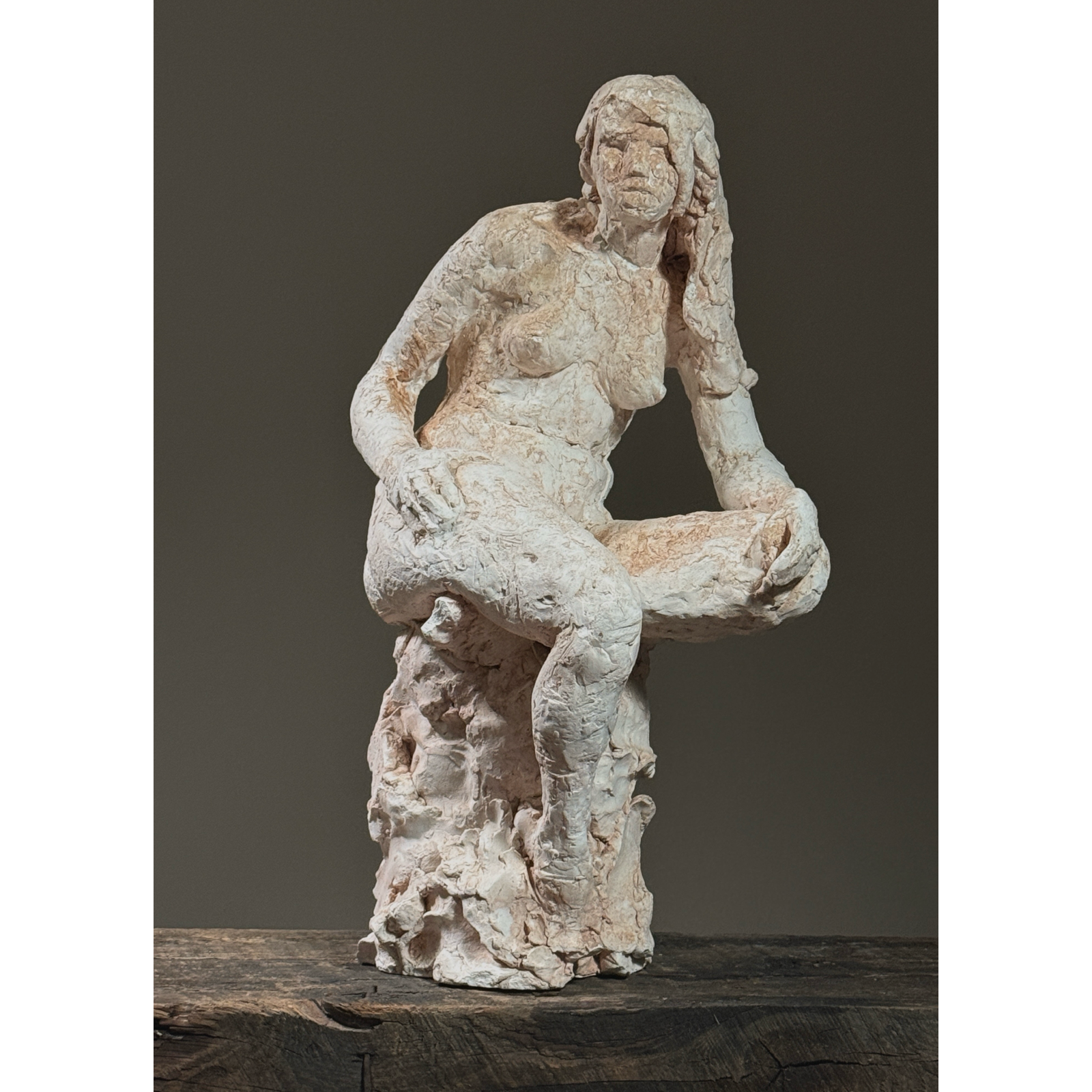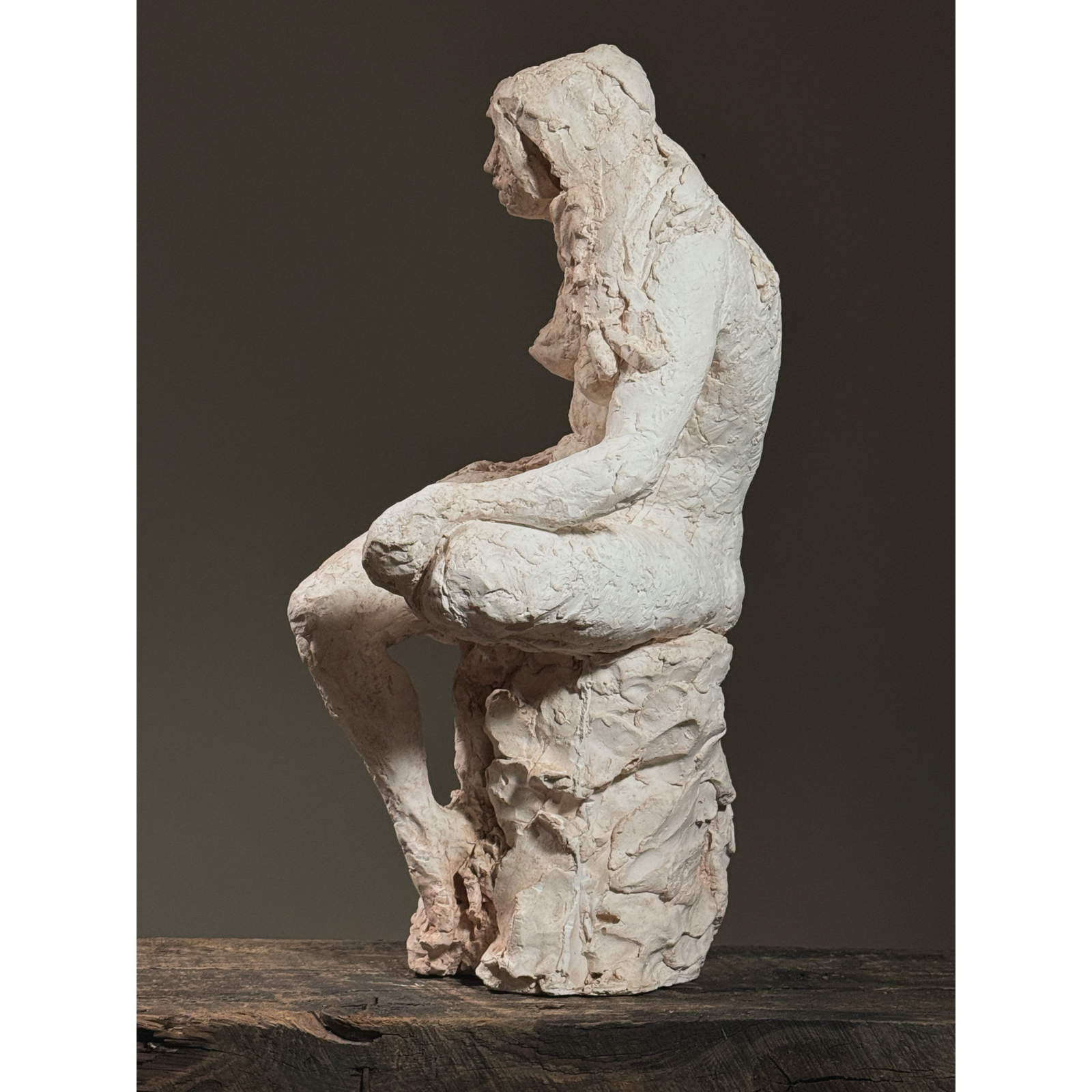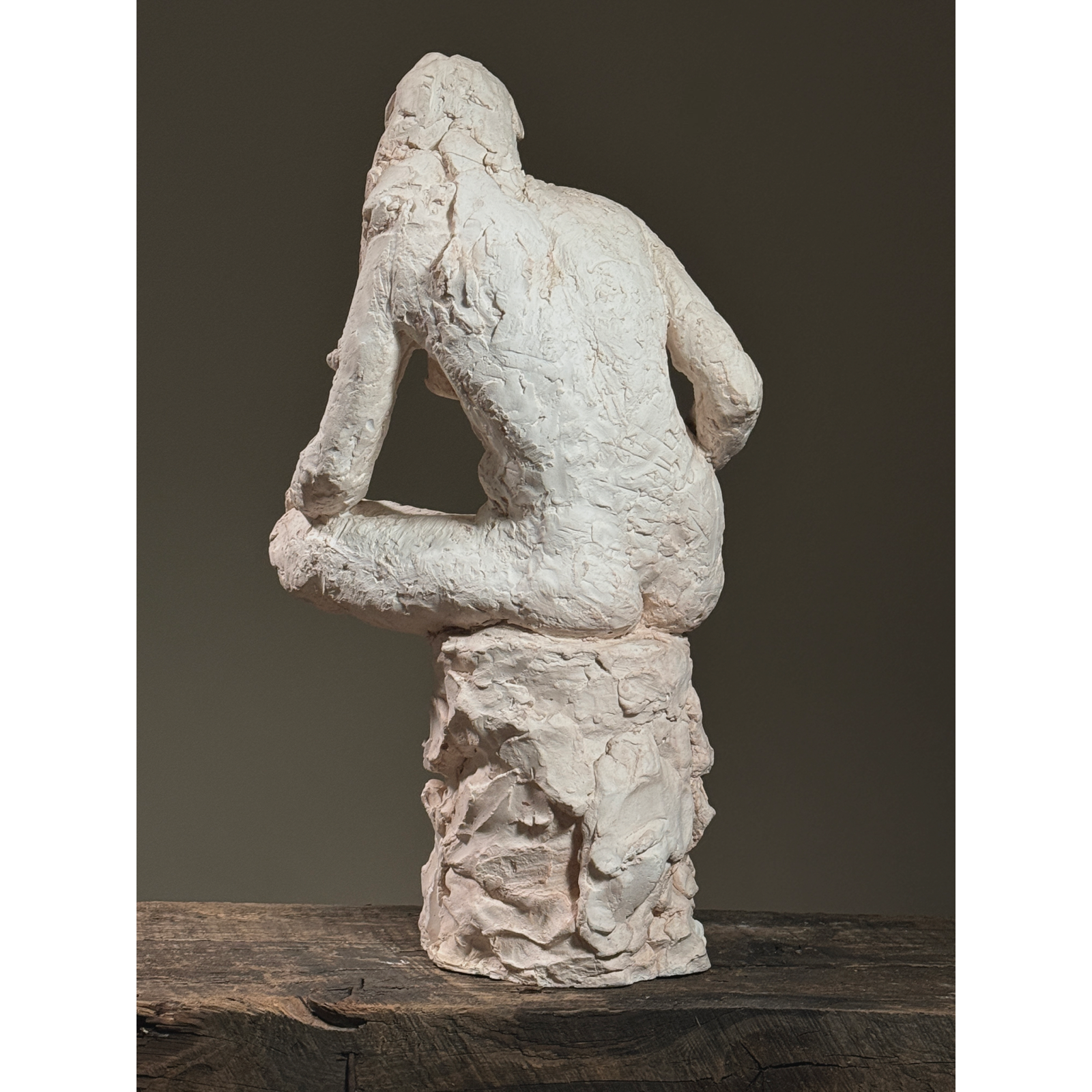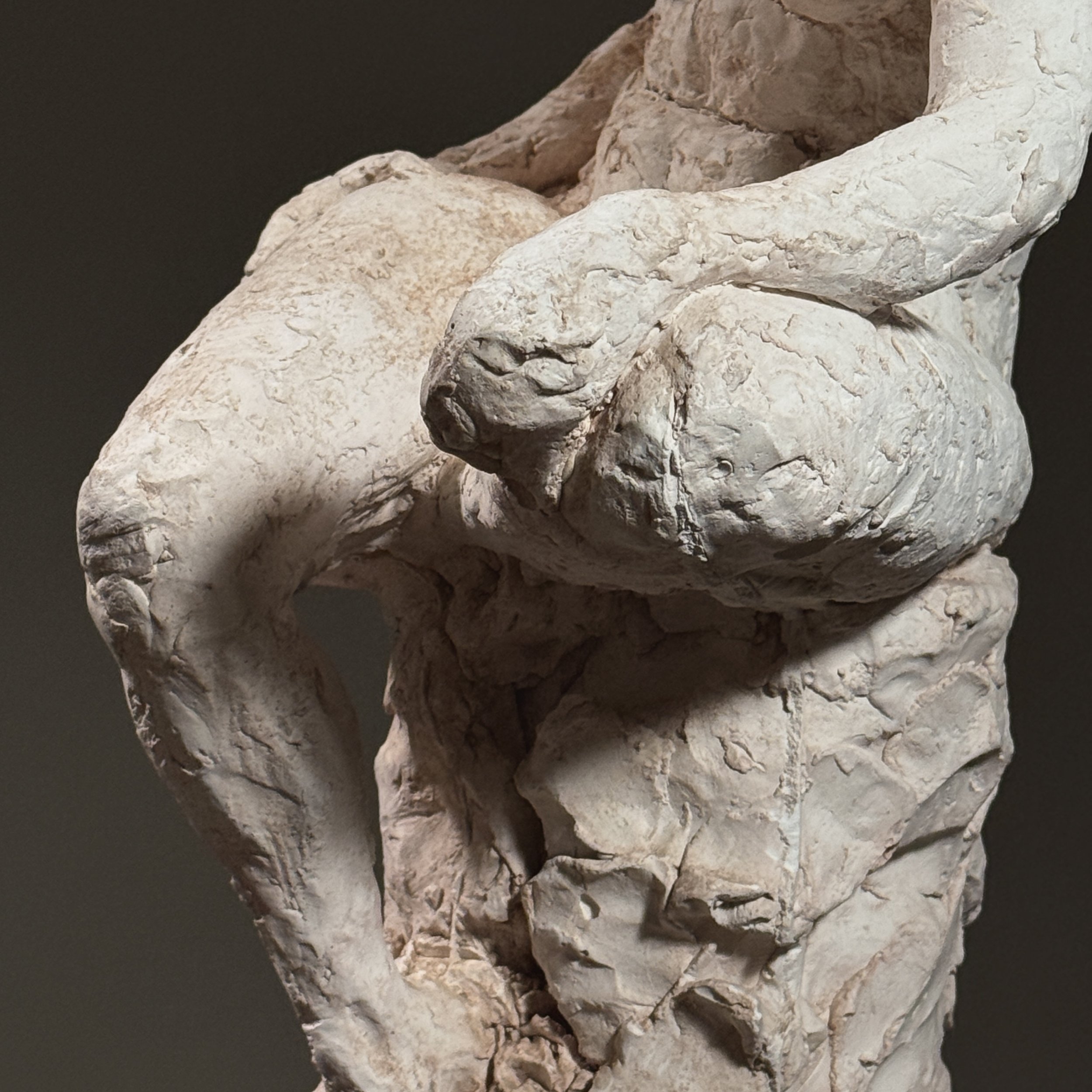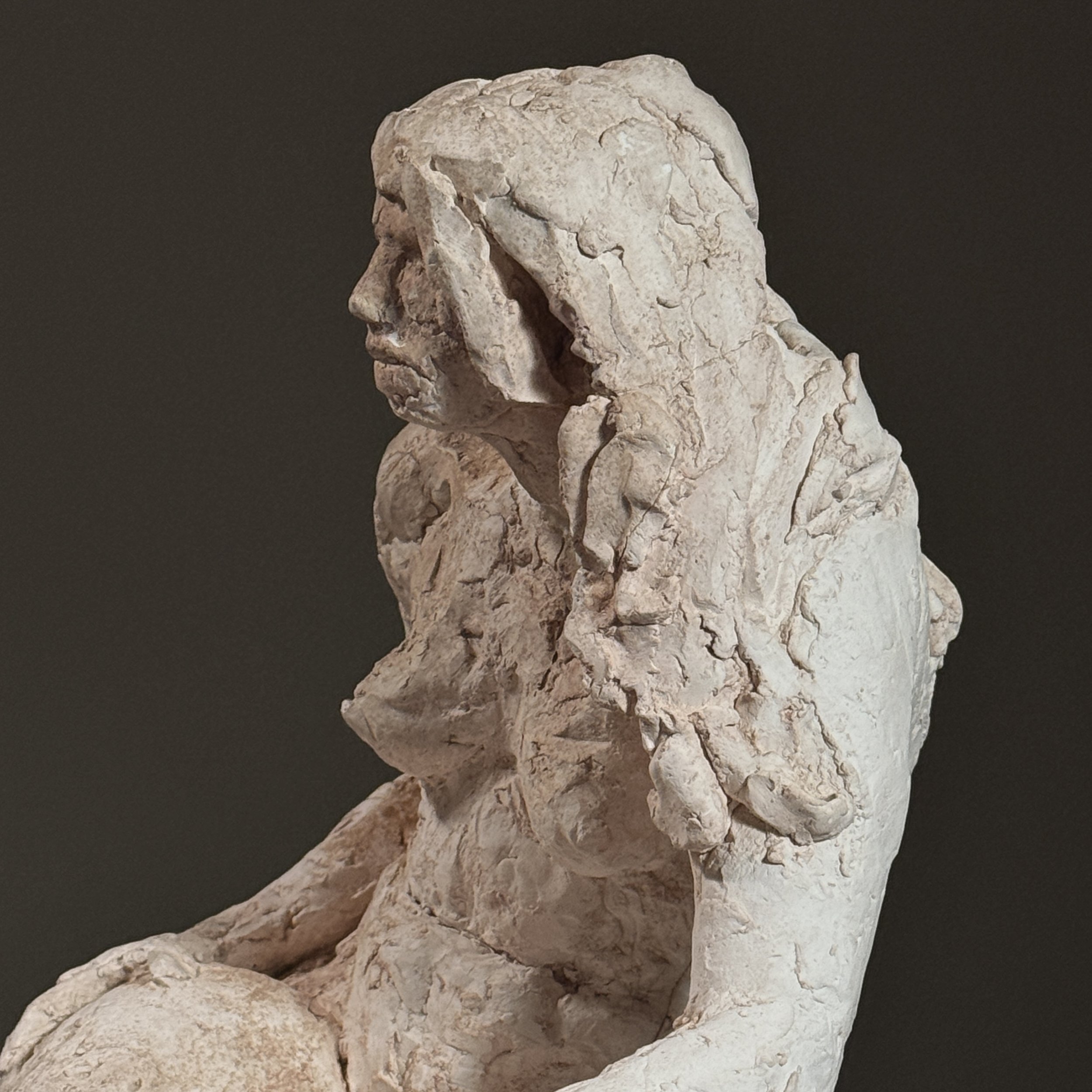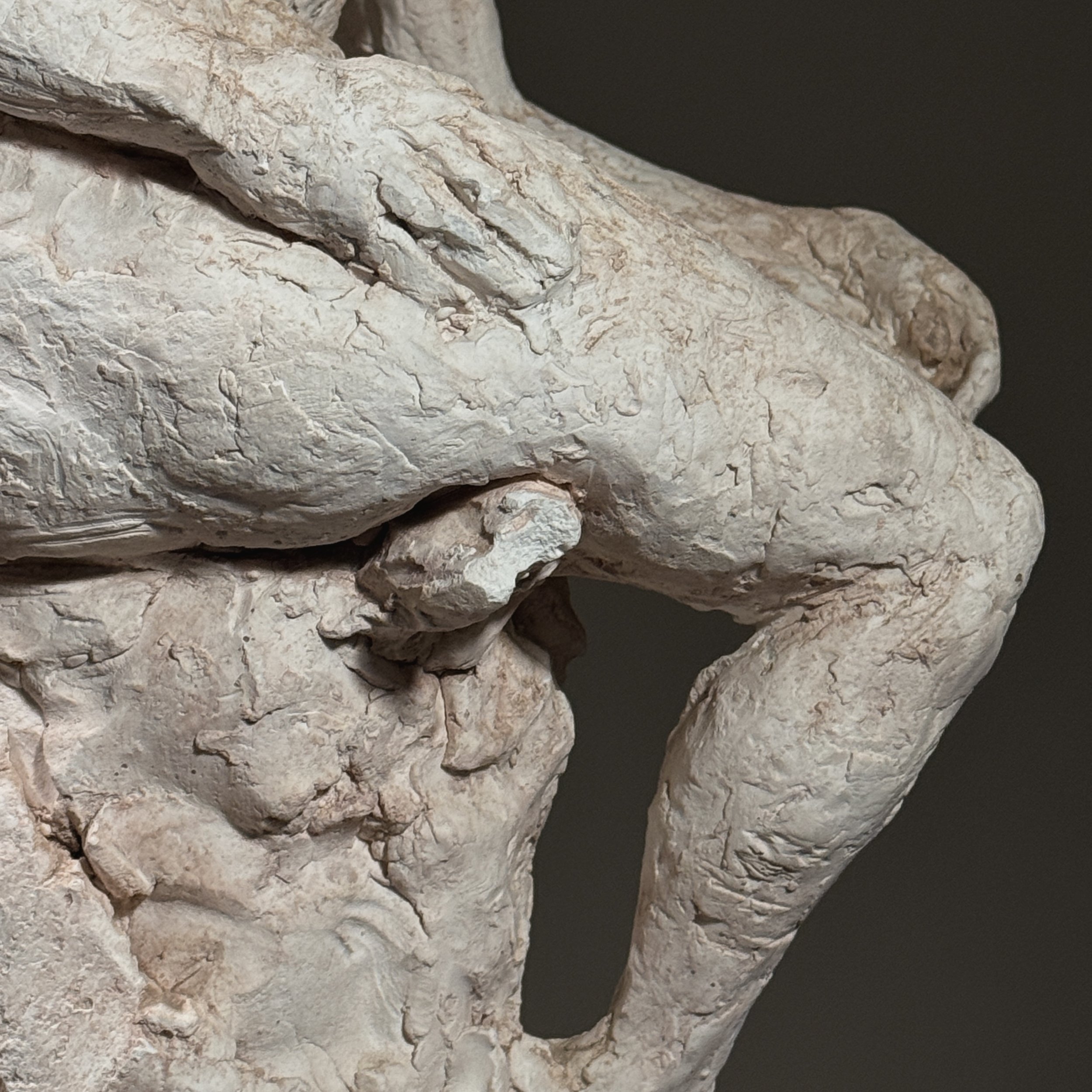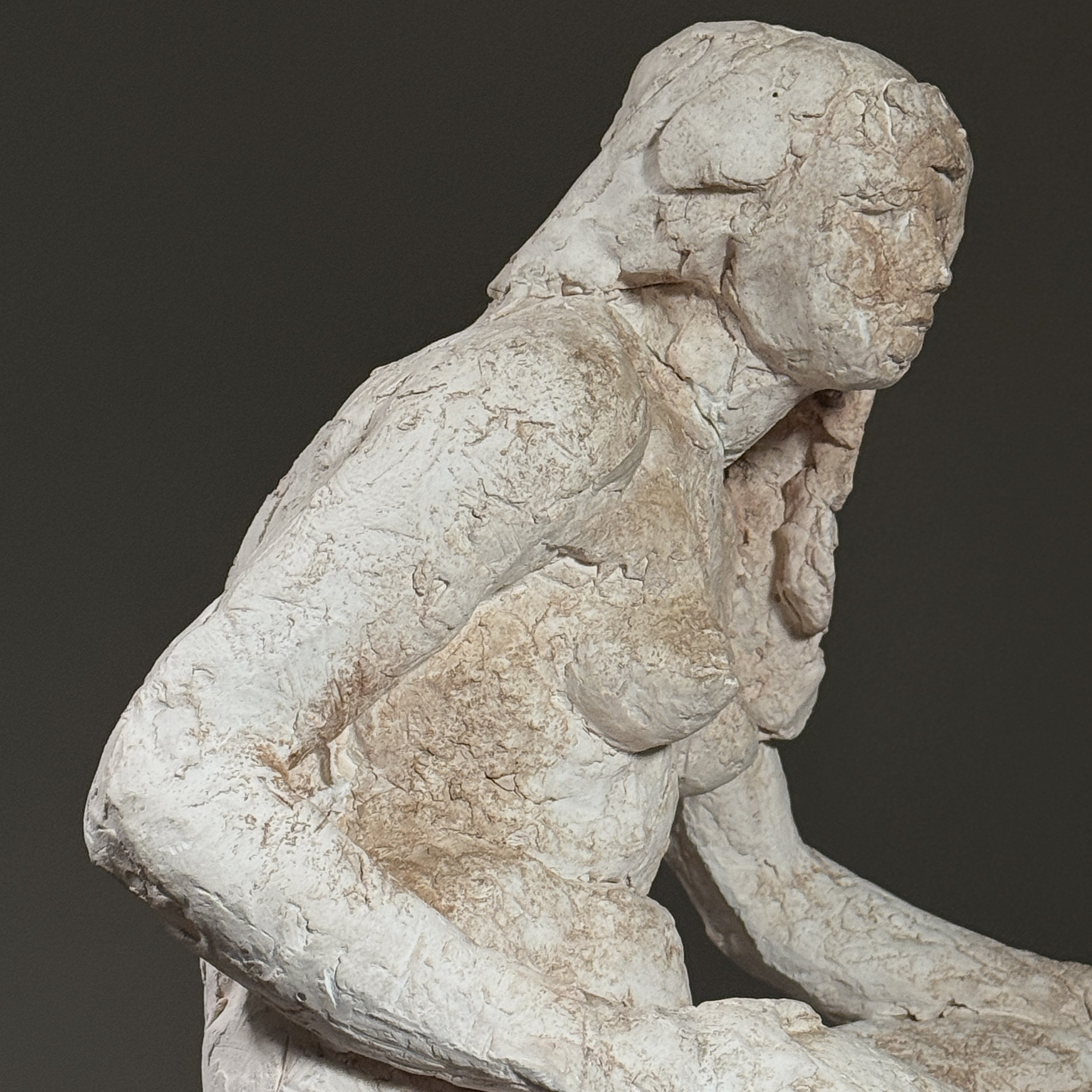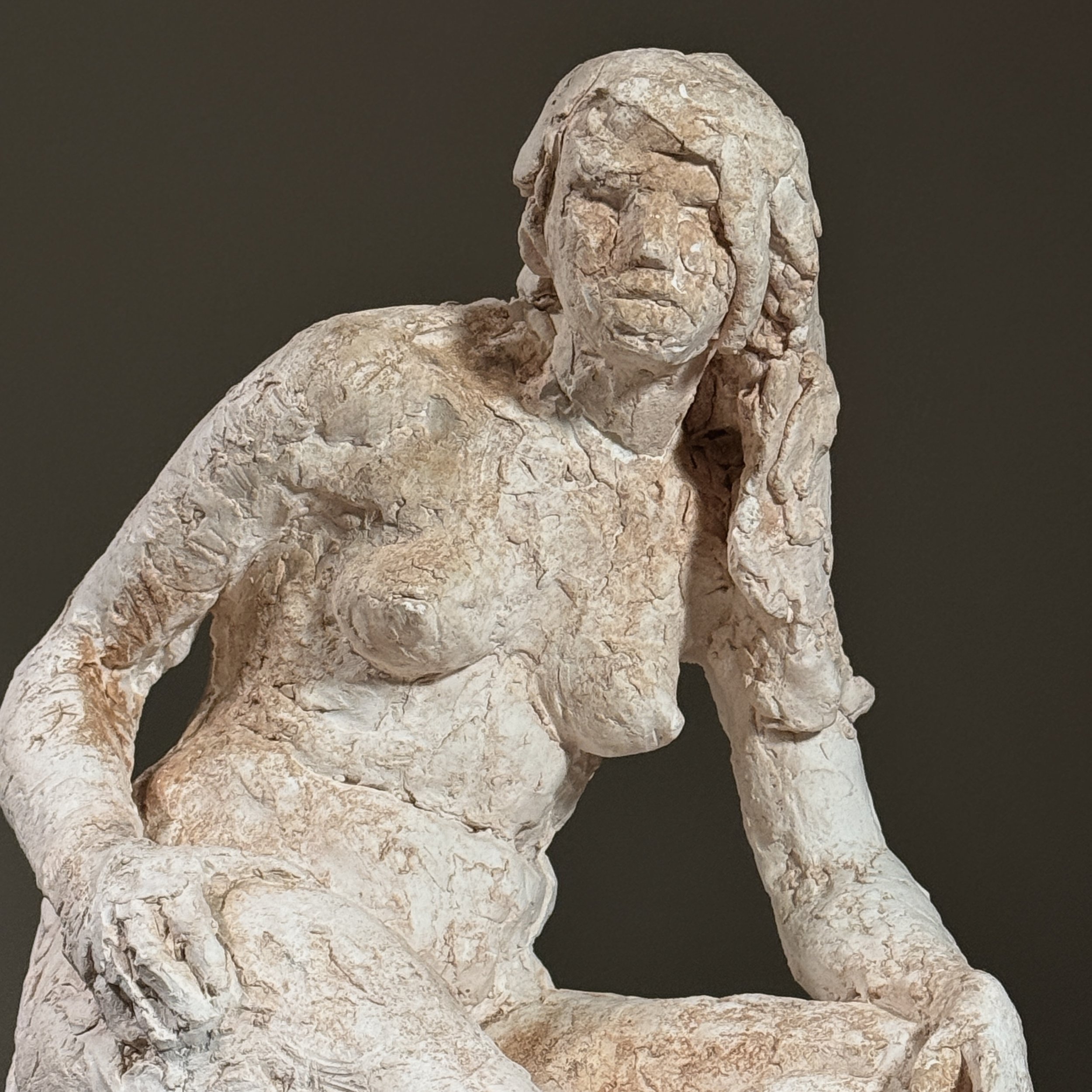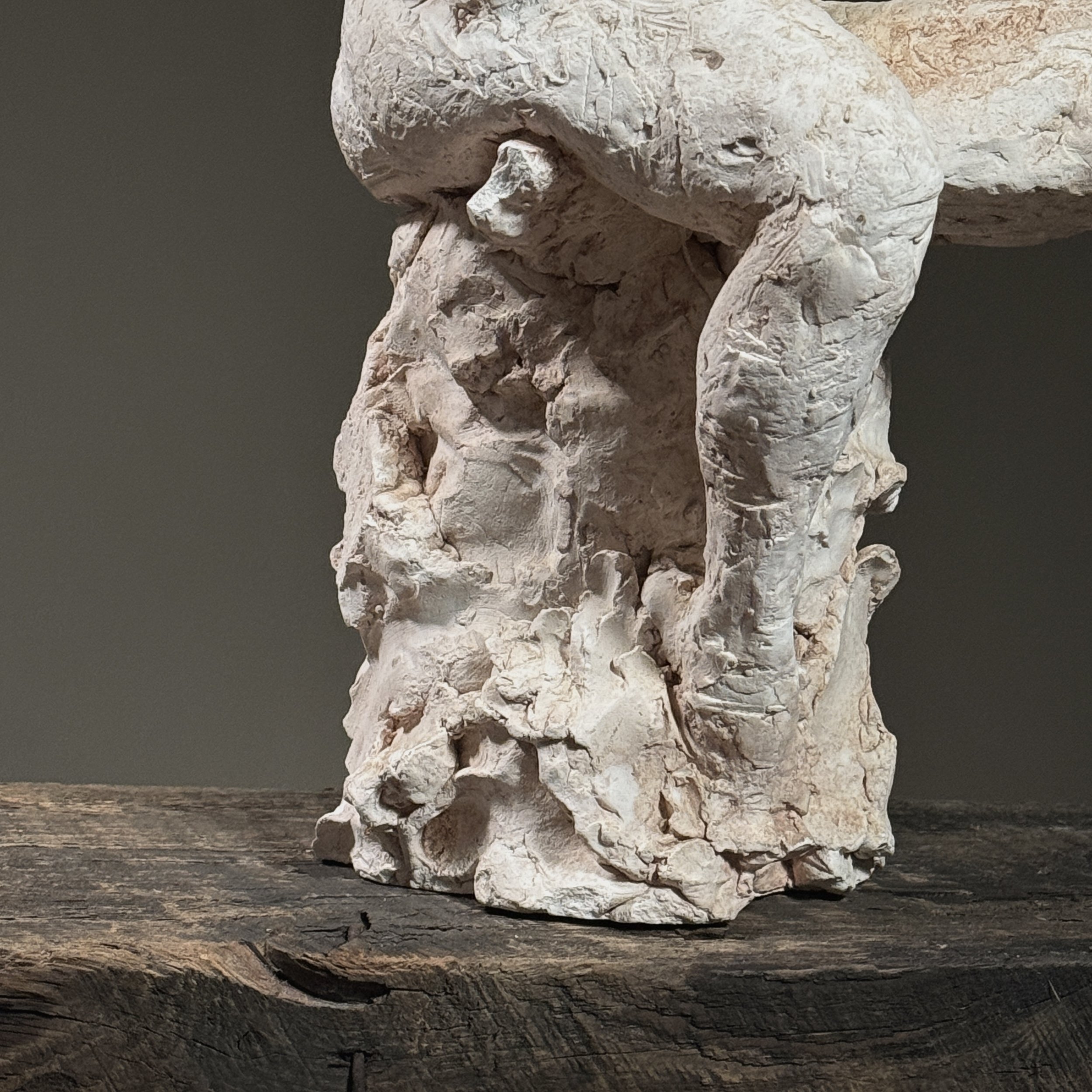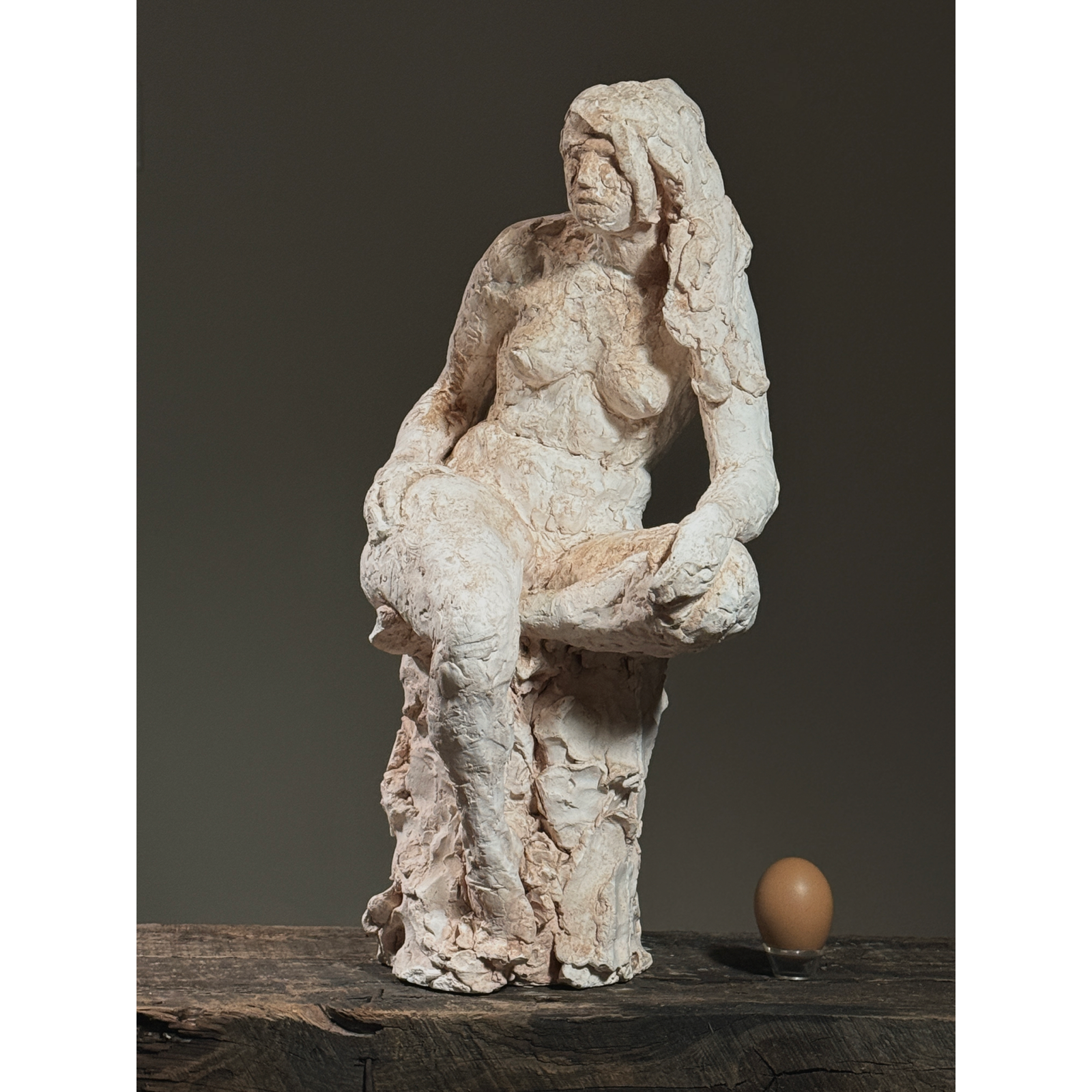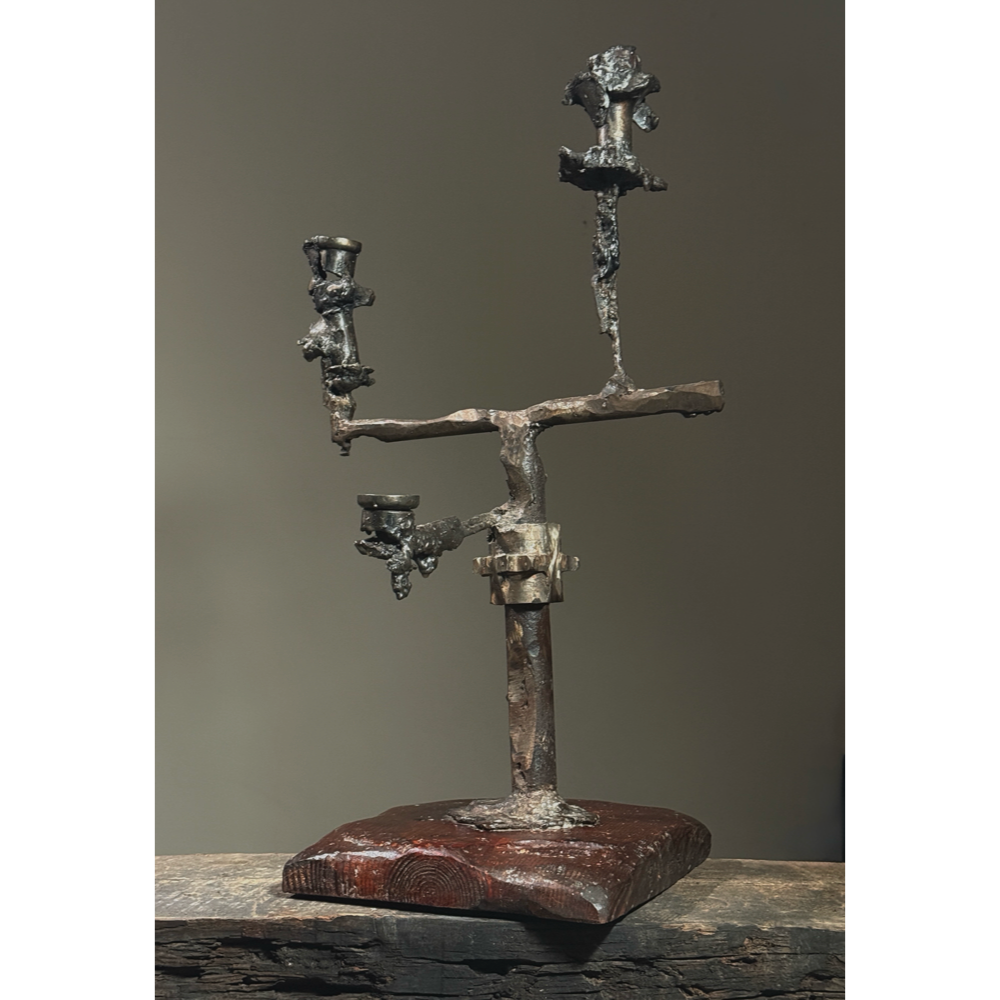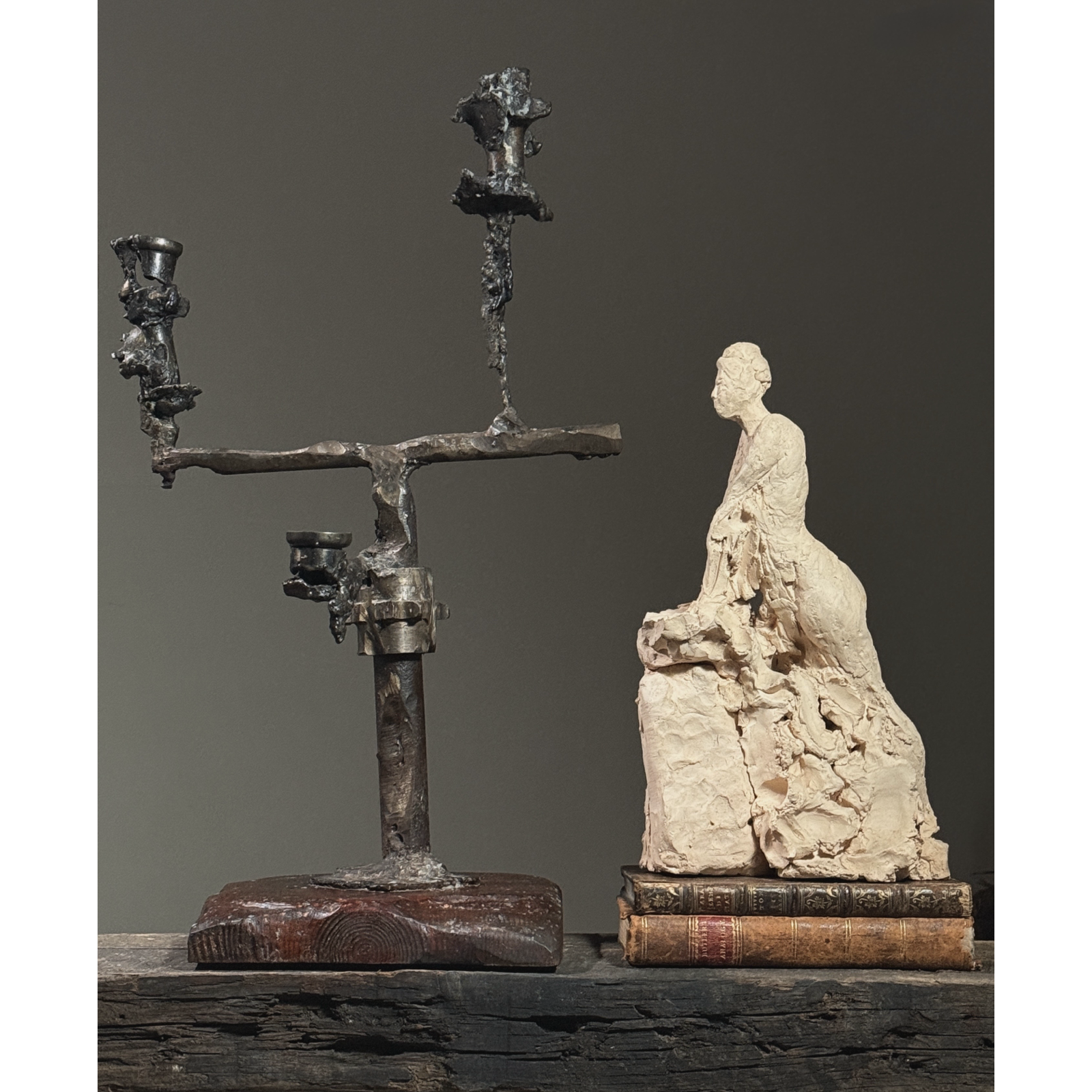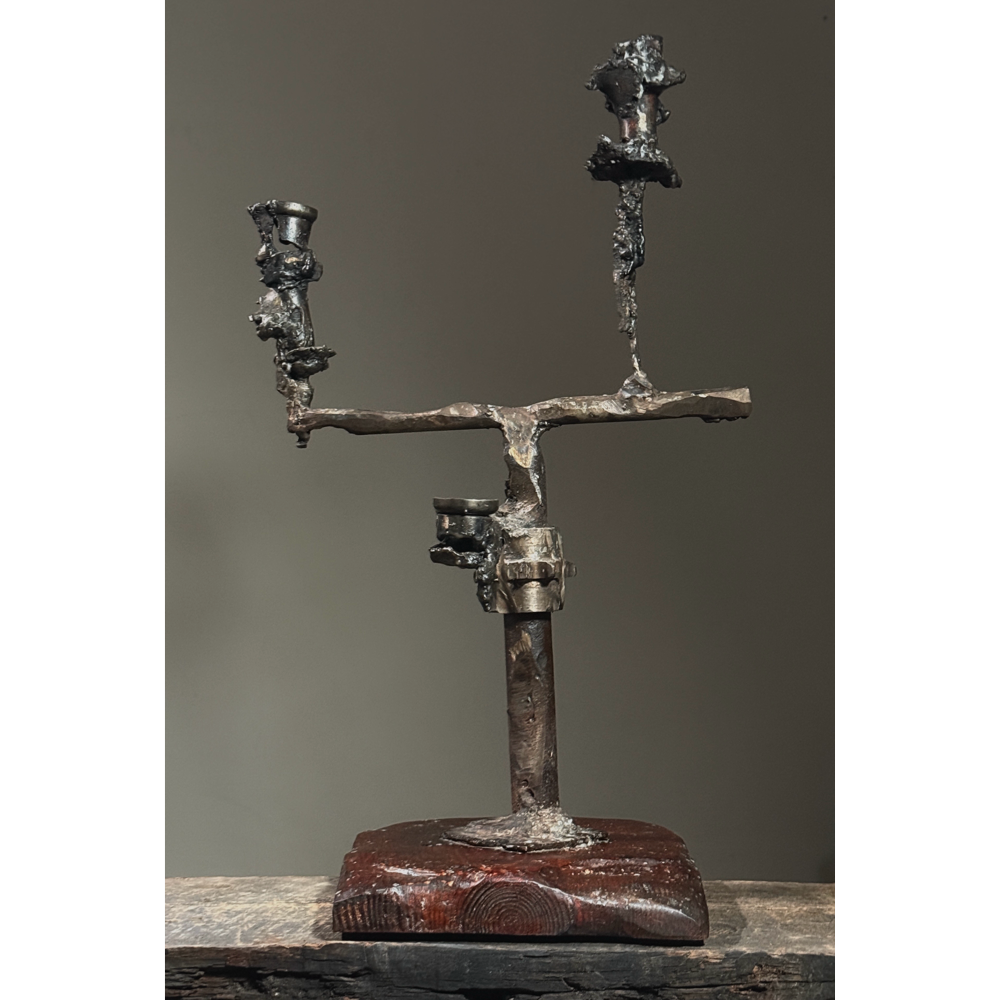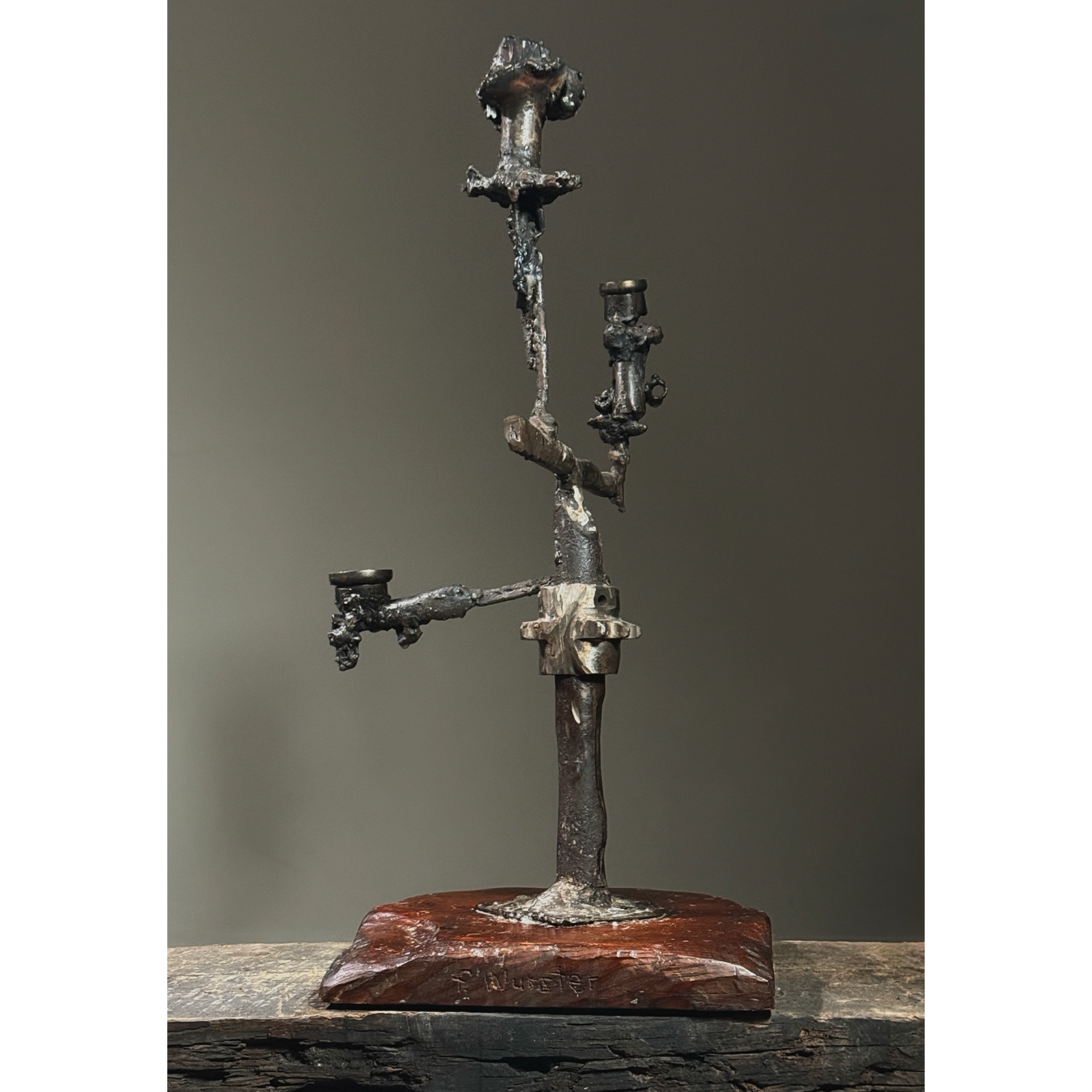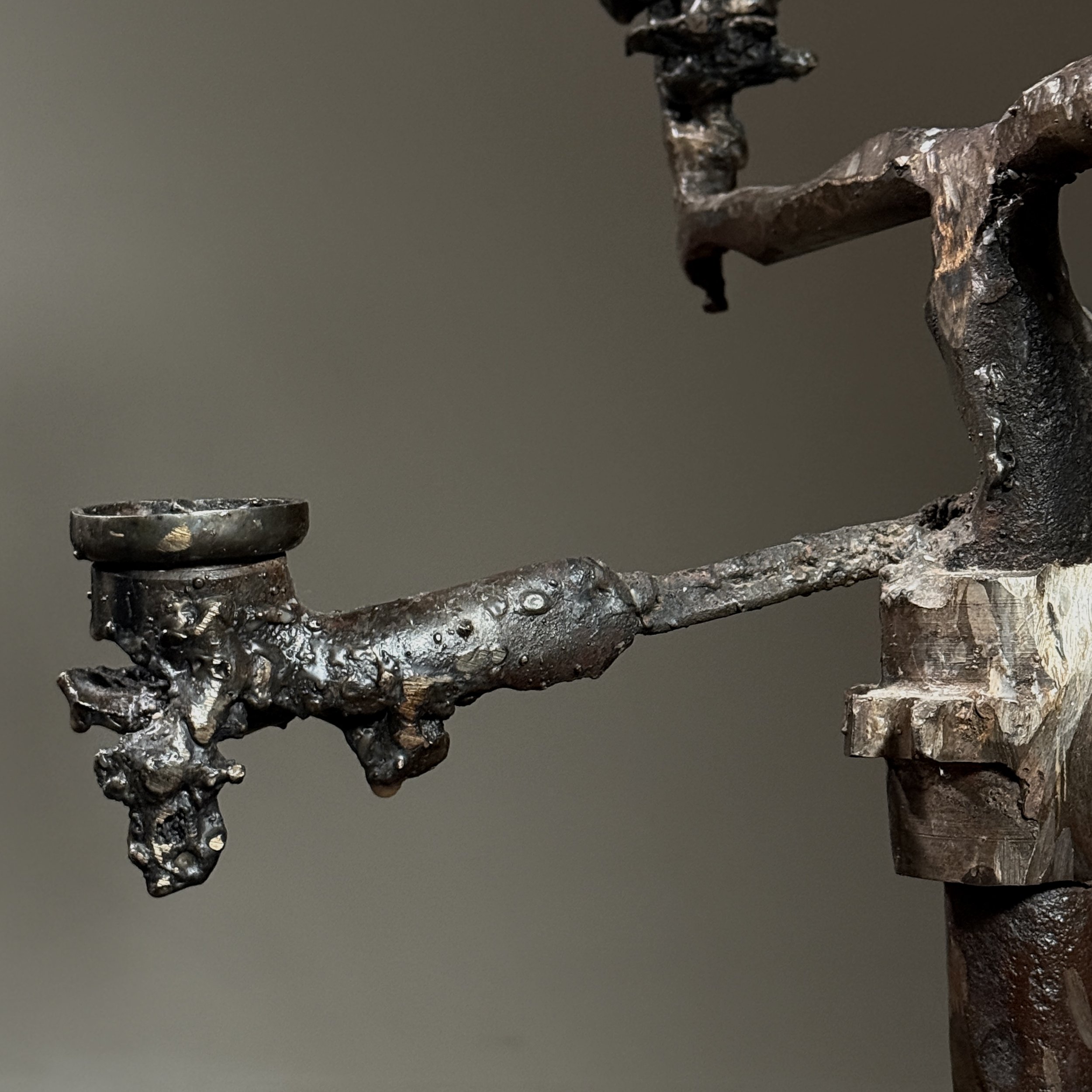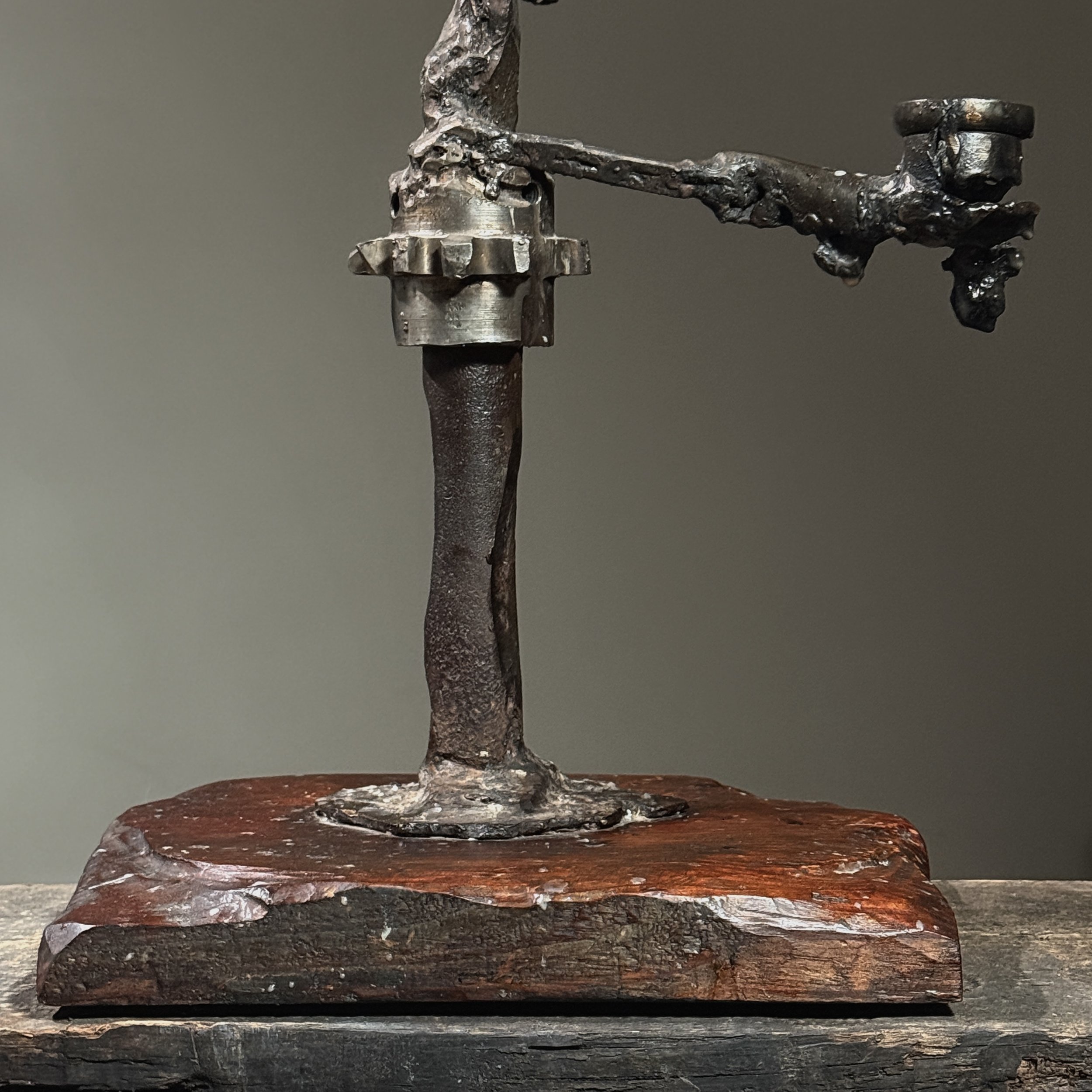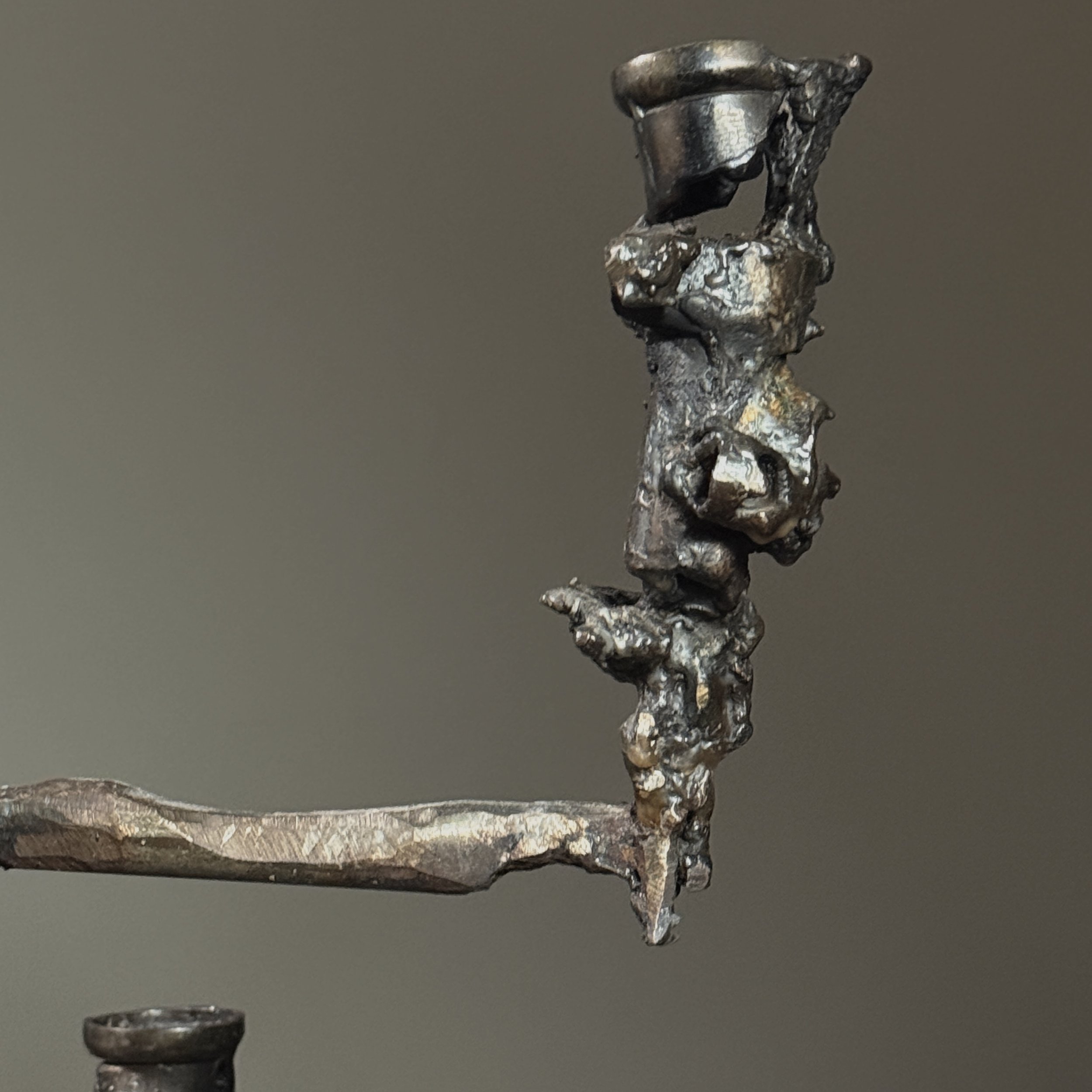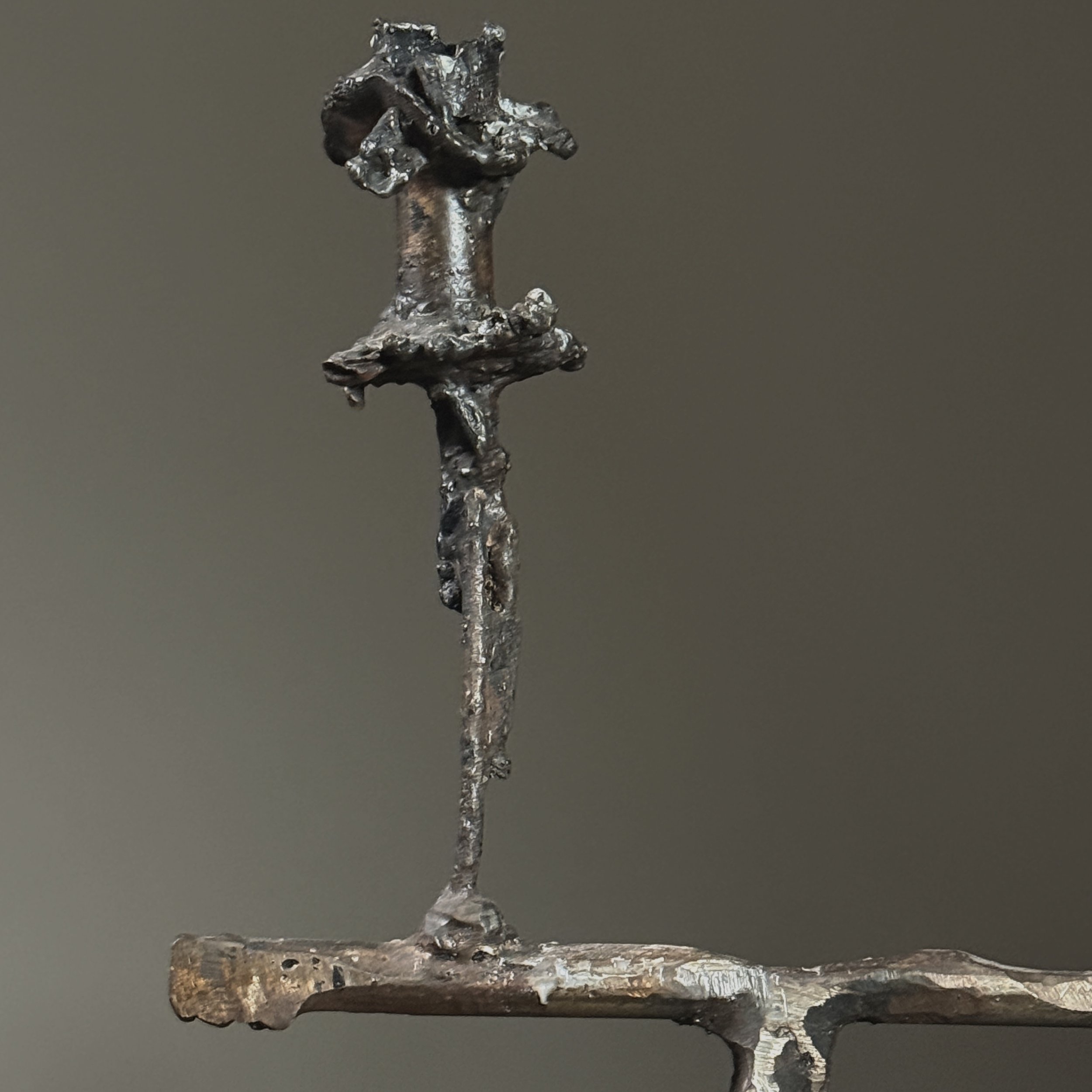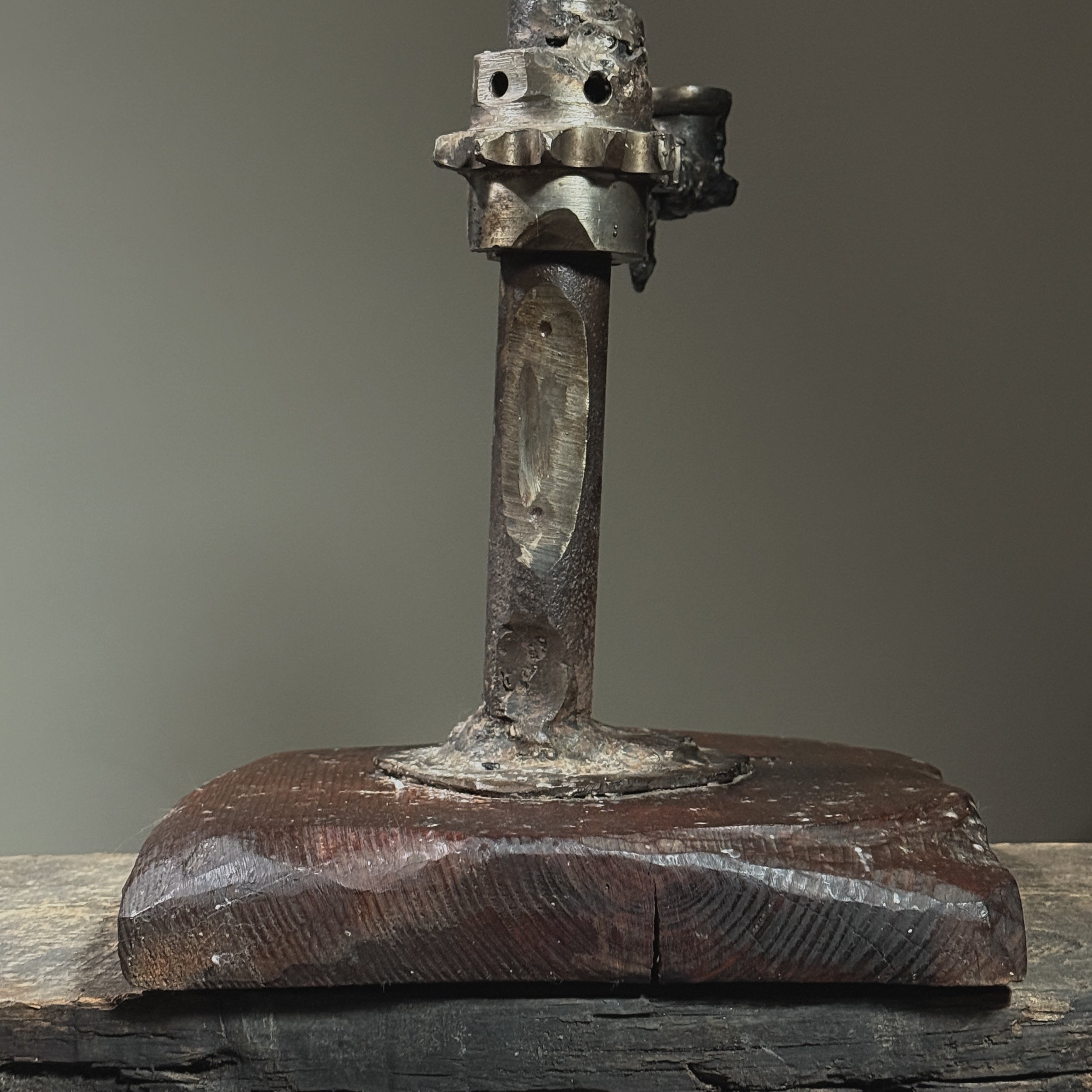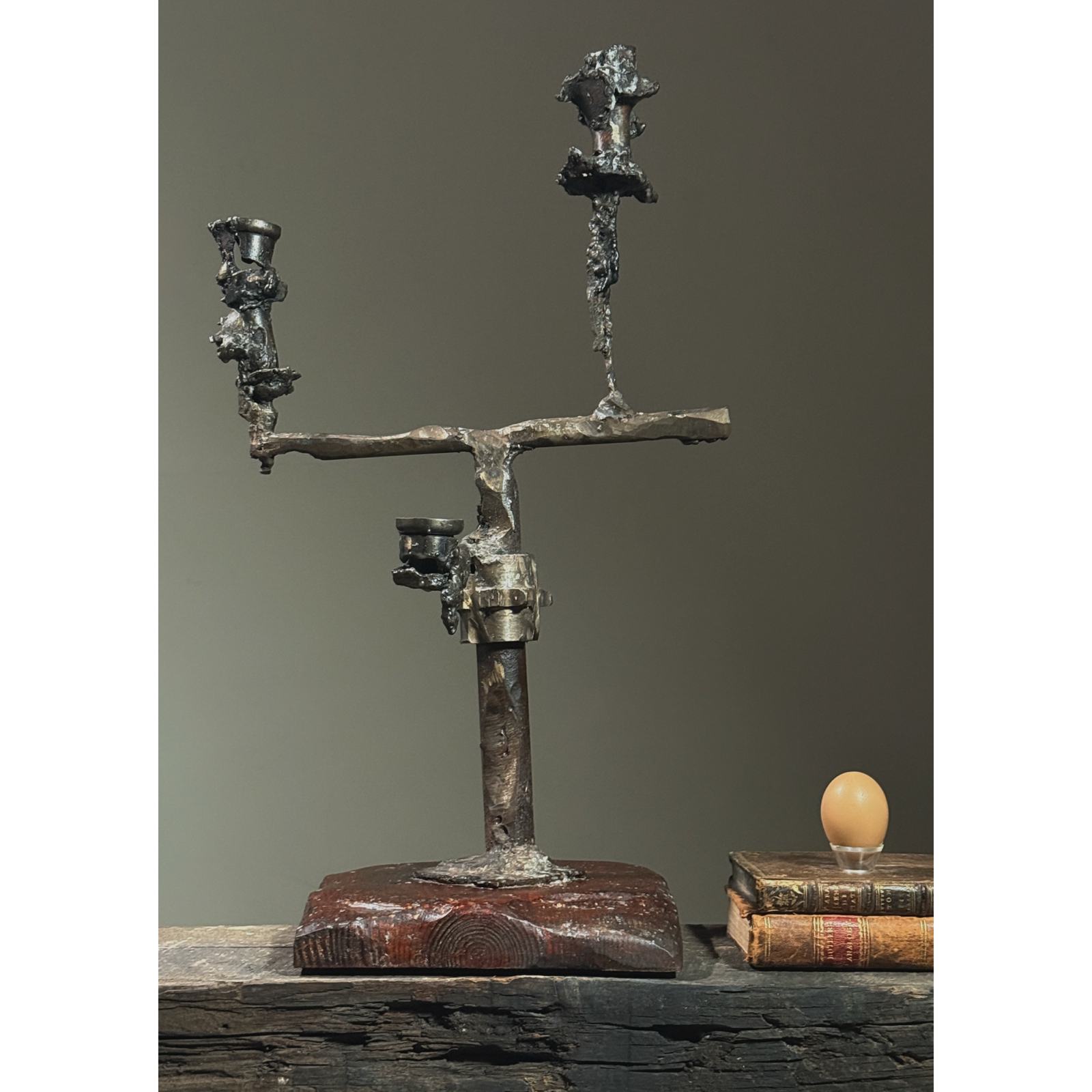 Image 1 of 13
Image 1 of 13

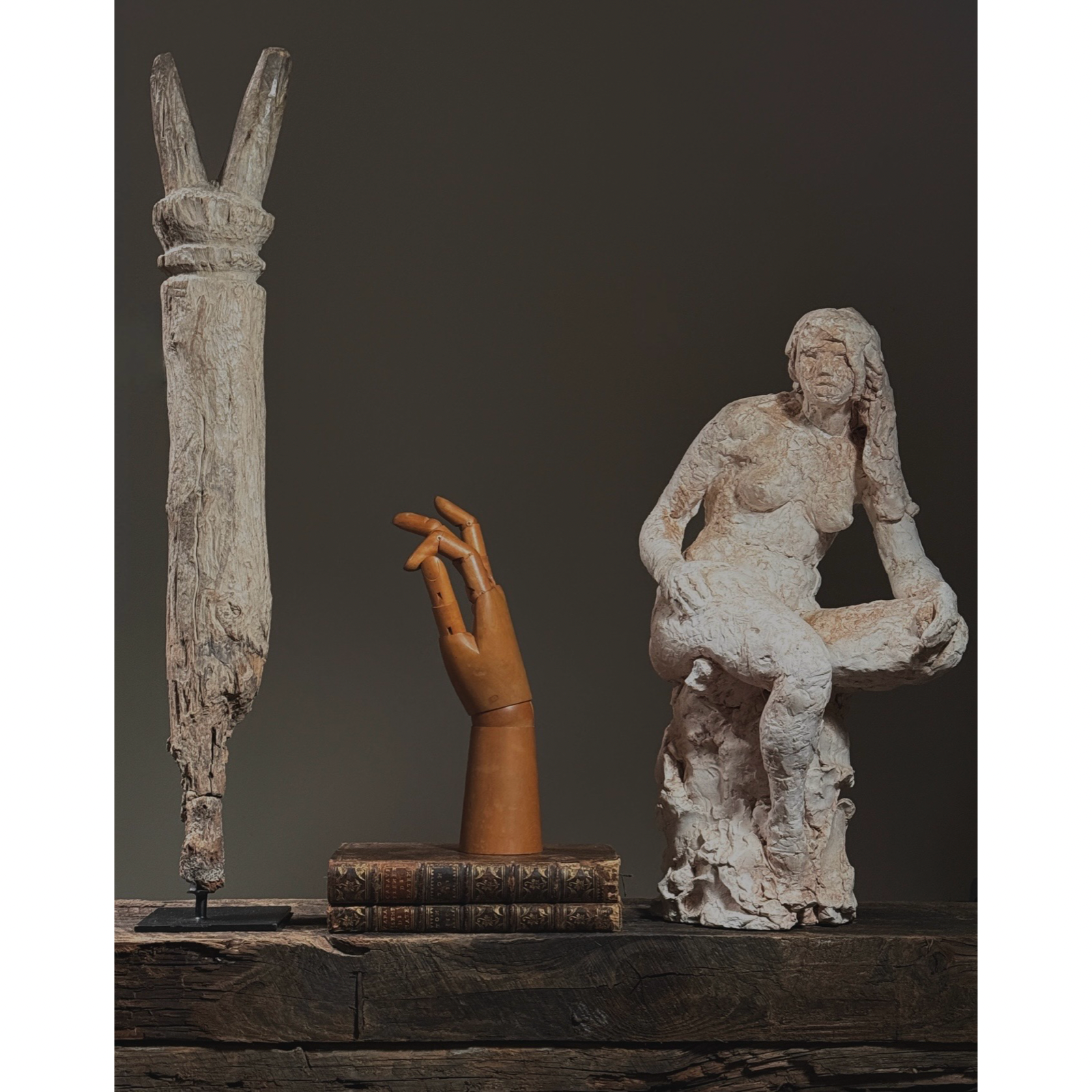 Image 2 of 13
Image 2 of 13

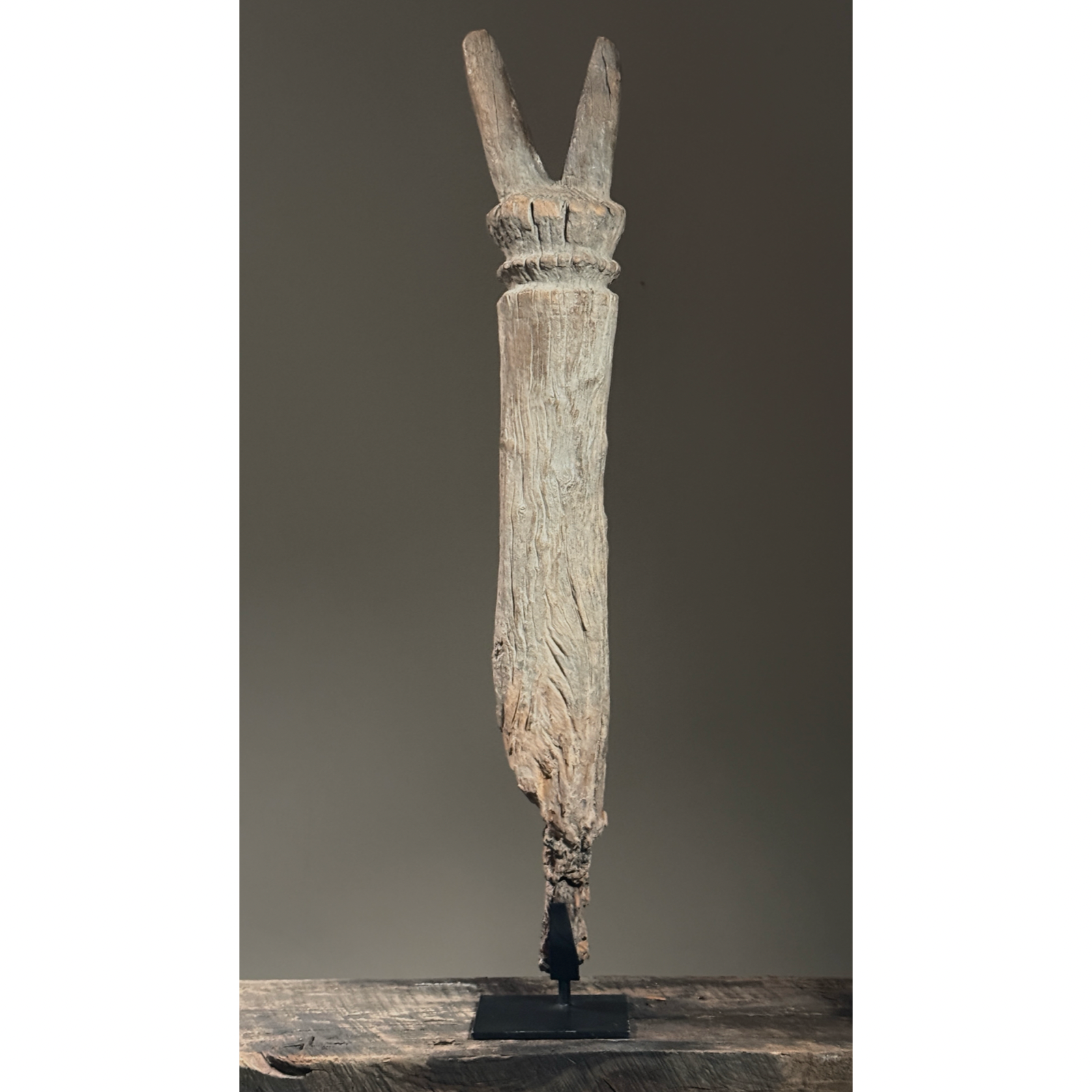 Image 3 of 13
Image 3 of 13

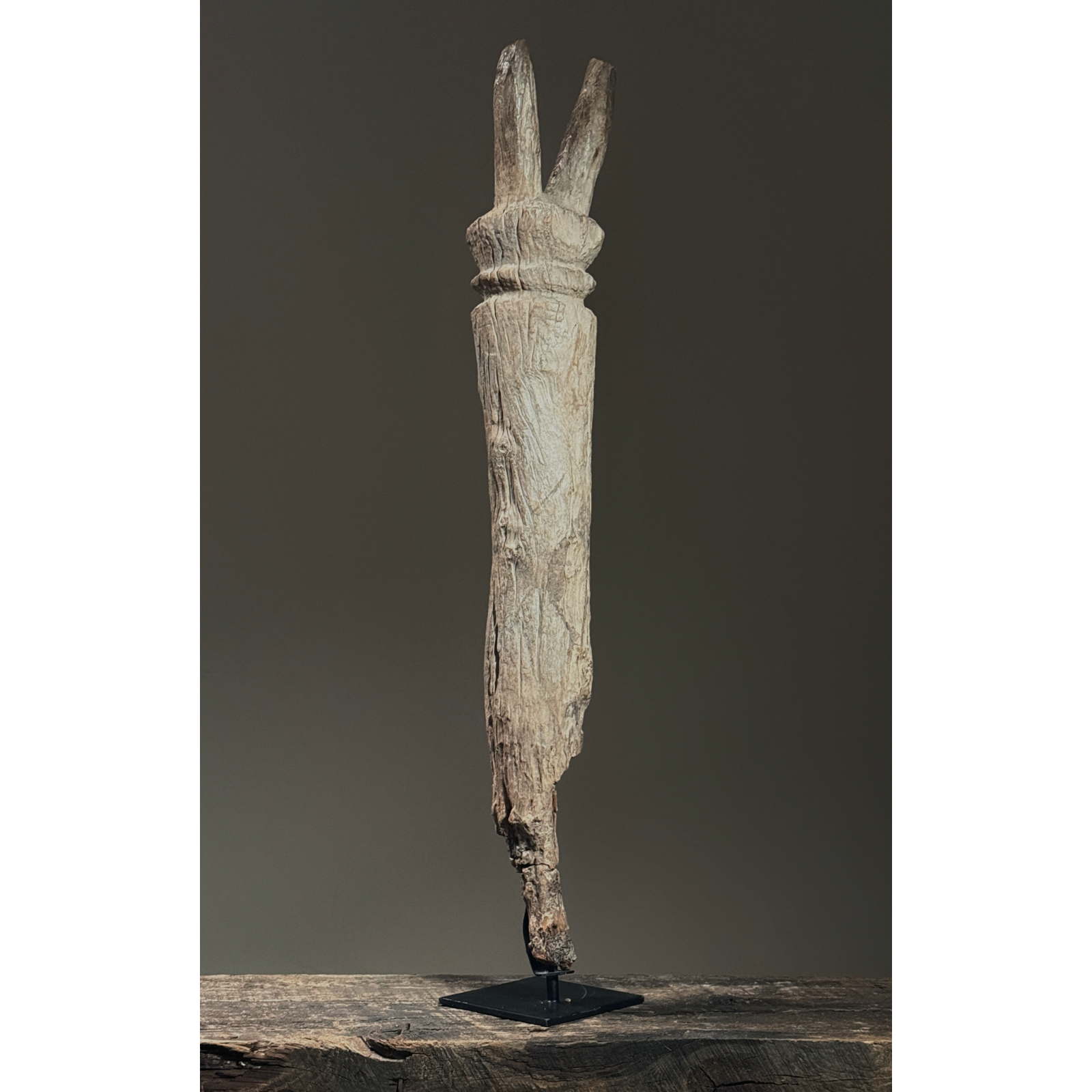 Image 4 of 13
Image 4 of 13

 Image 5 of 13
Image 5 of 13

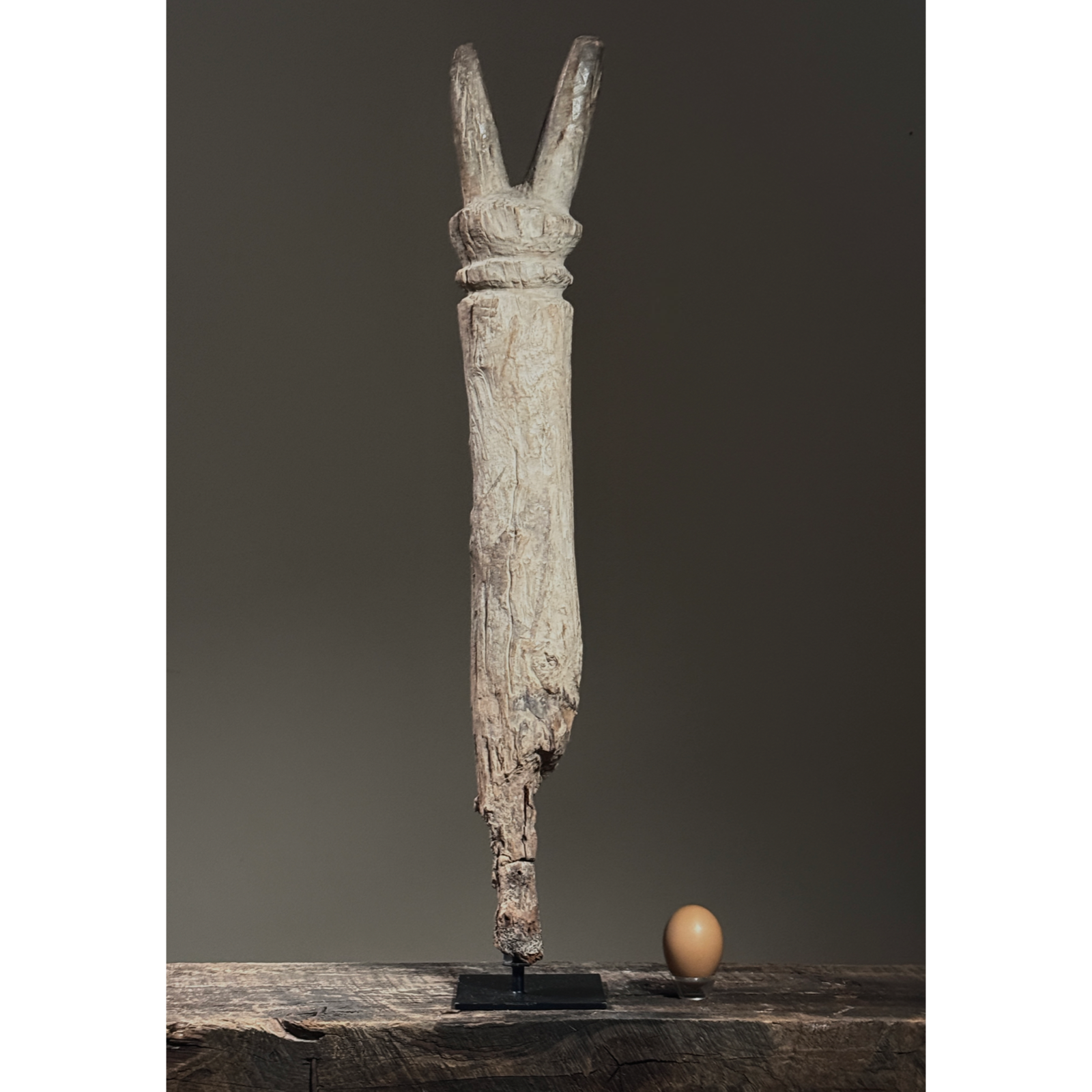 Image 6 of 13
Image 6 of 13

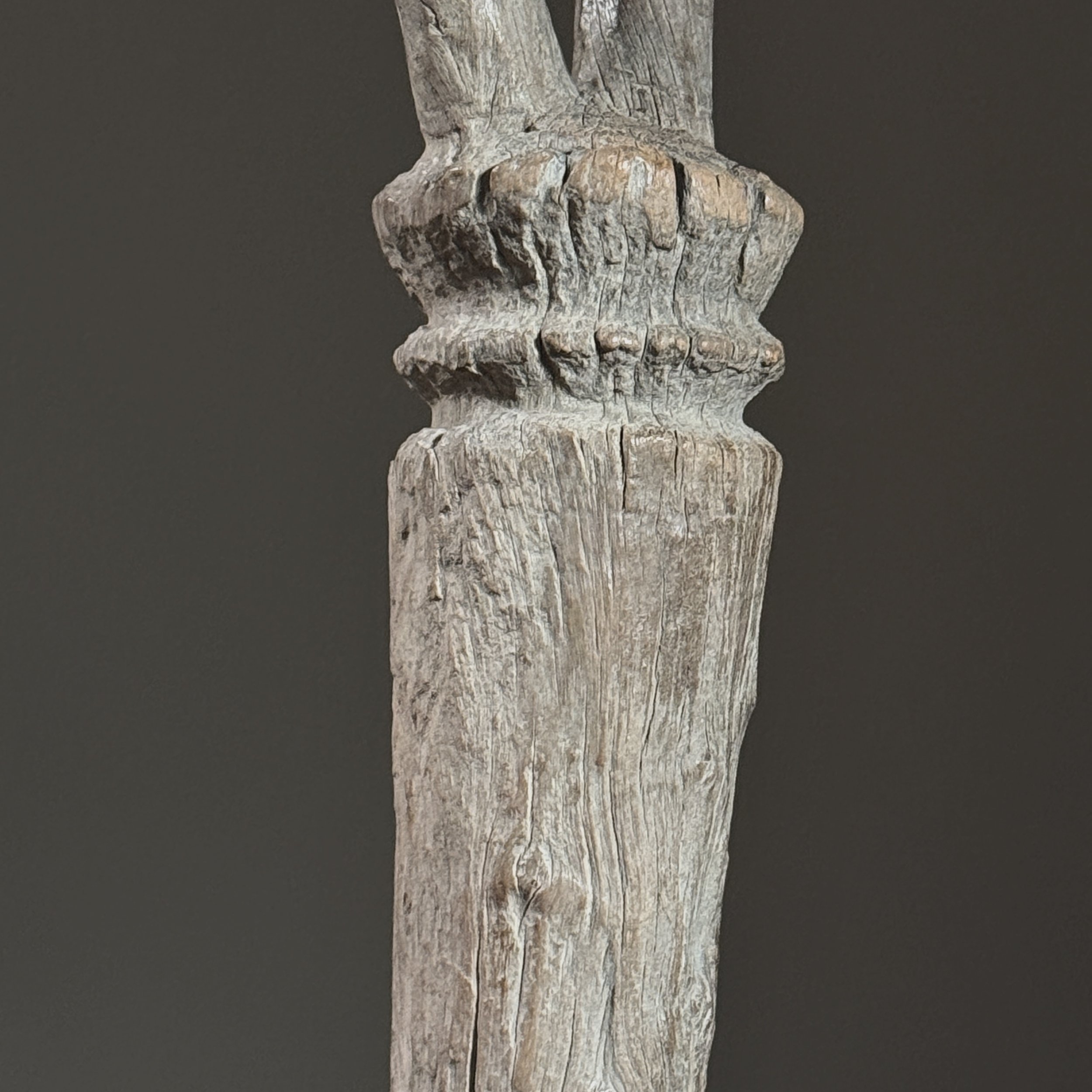 Image 7 of 13
Image 7 of 13

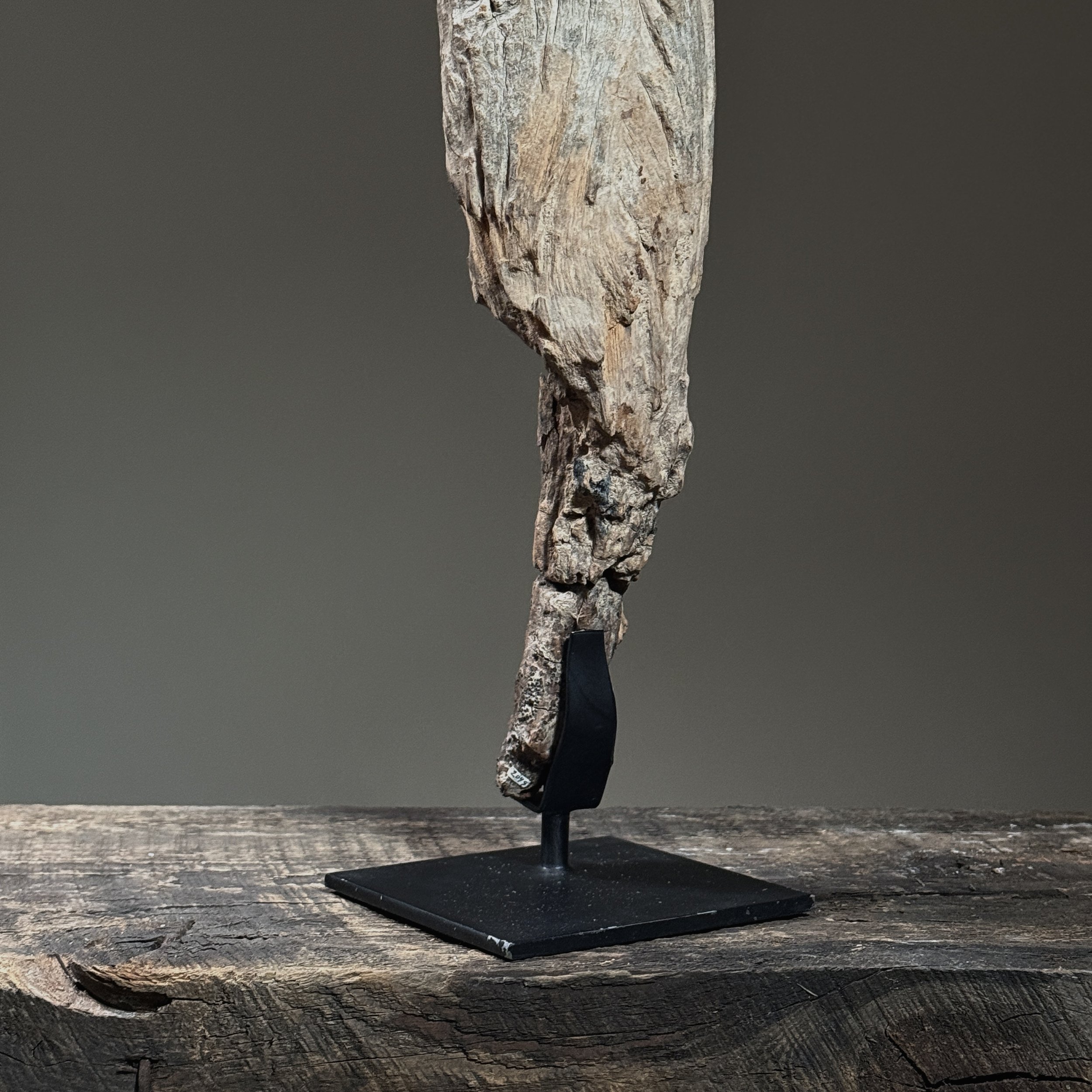 Image 8 of 13
Image 8 of 13

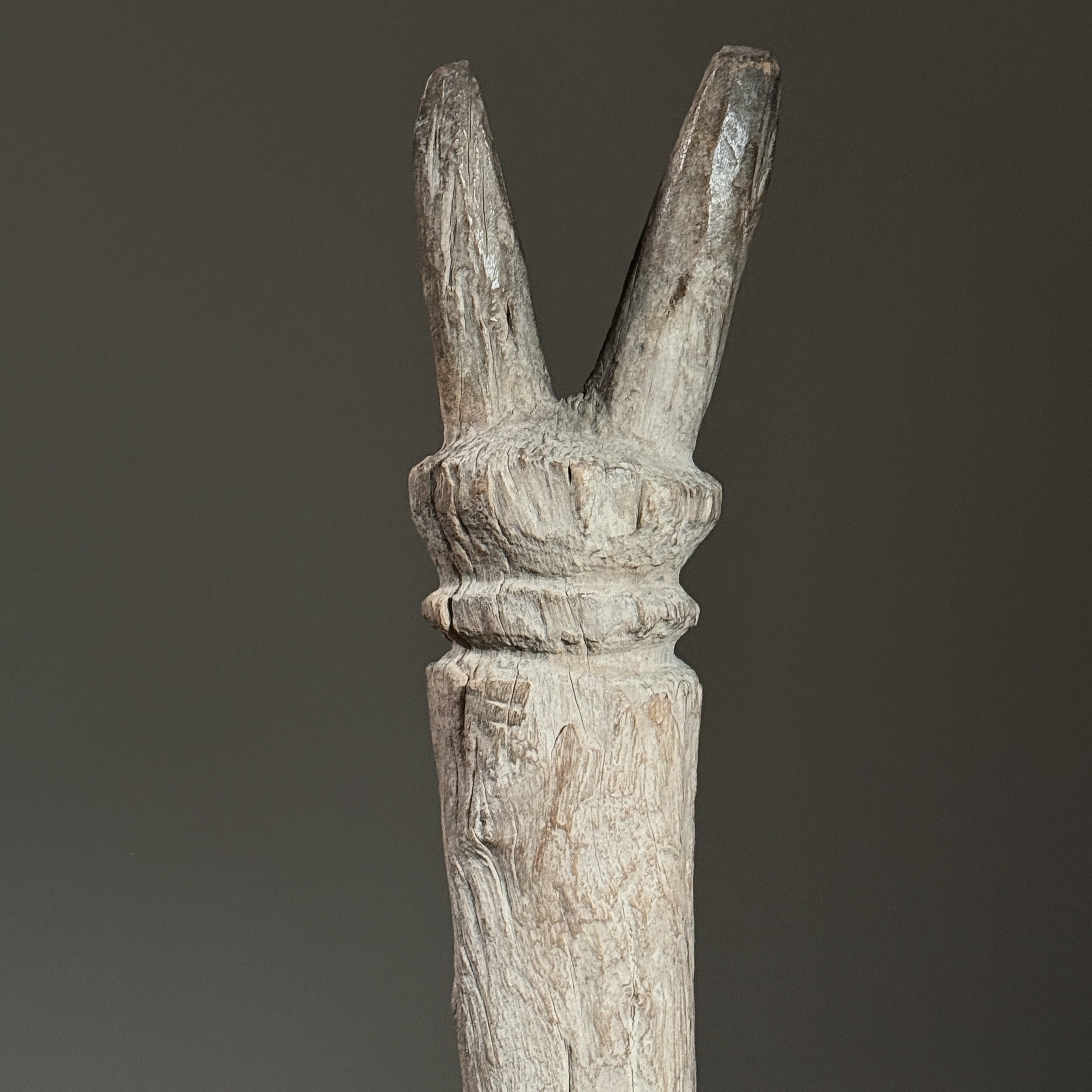 Image 9 of 13
Image 9 of 13

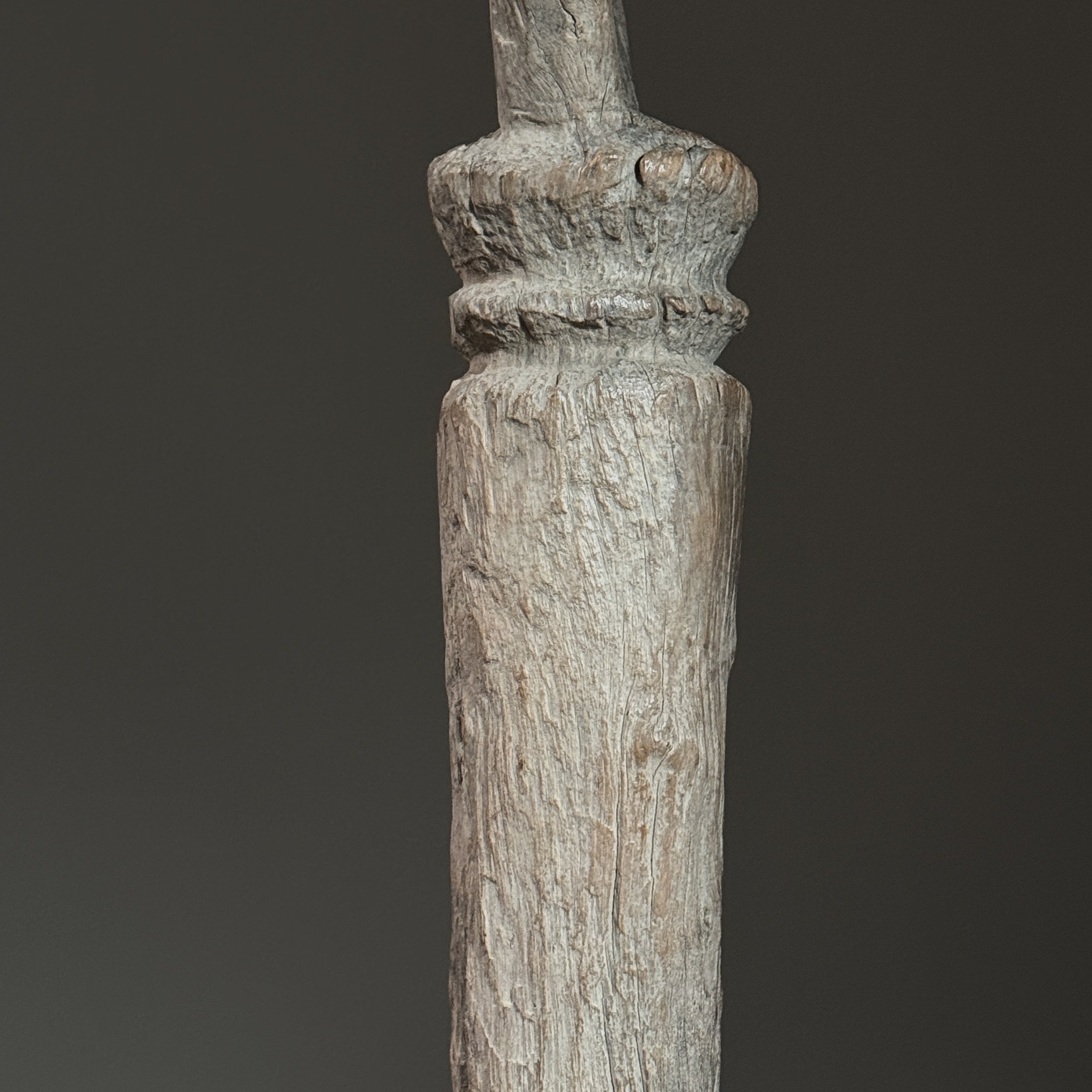 Image 10 of 13
Image 10 of 13

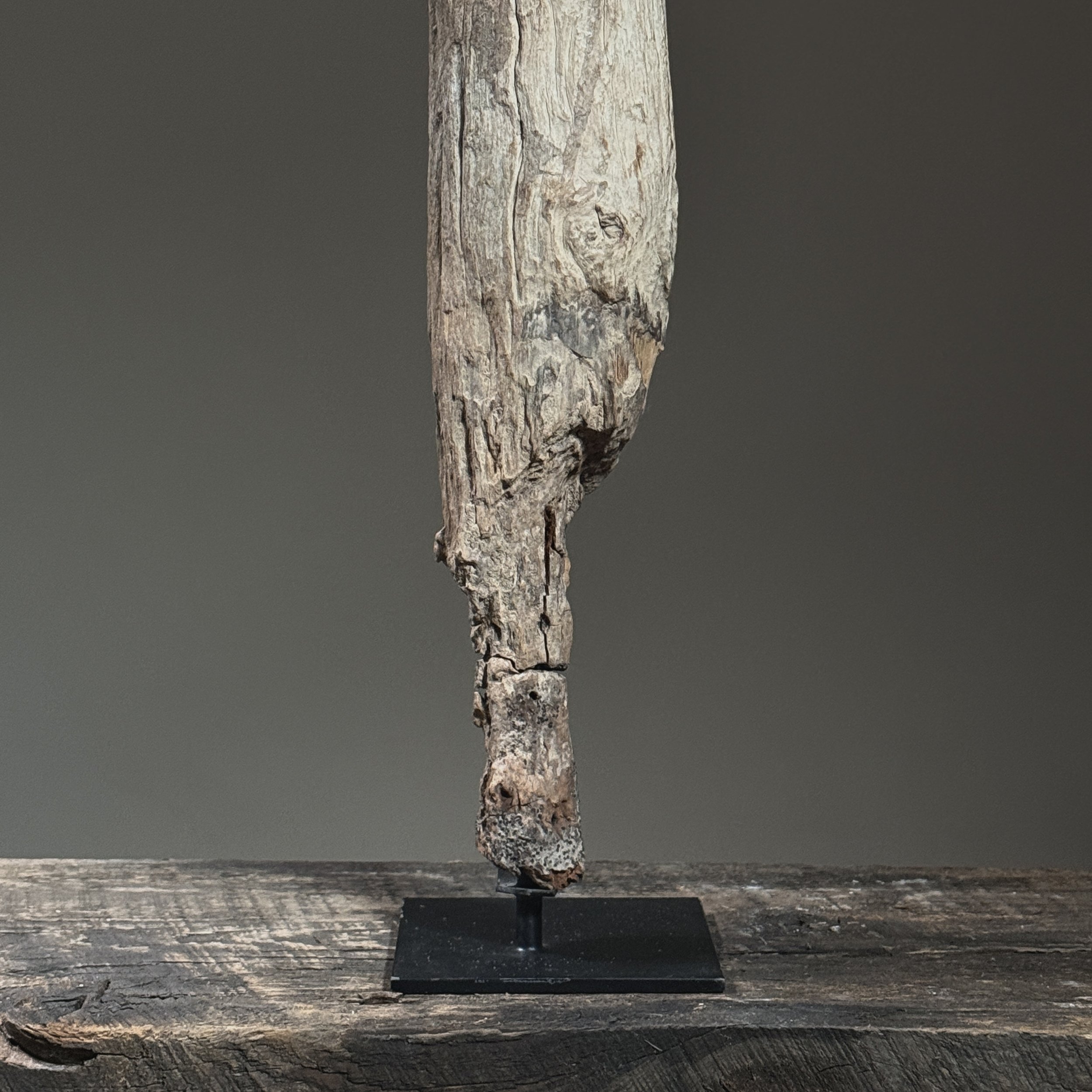 Image 11 of 13
Image 11 of 13

 Image 12 of 13
Image 12 of 13

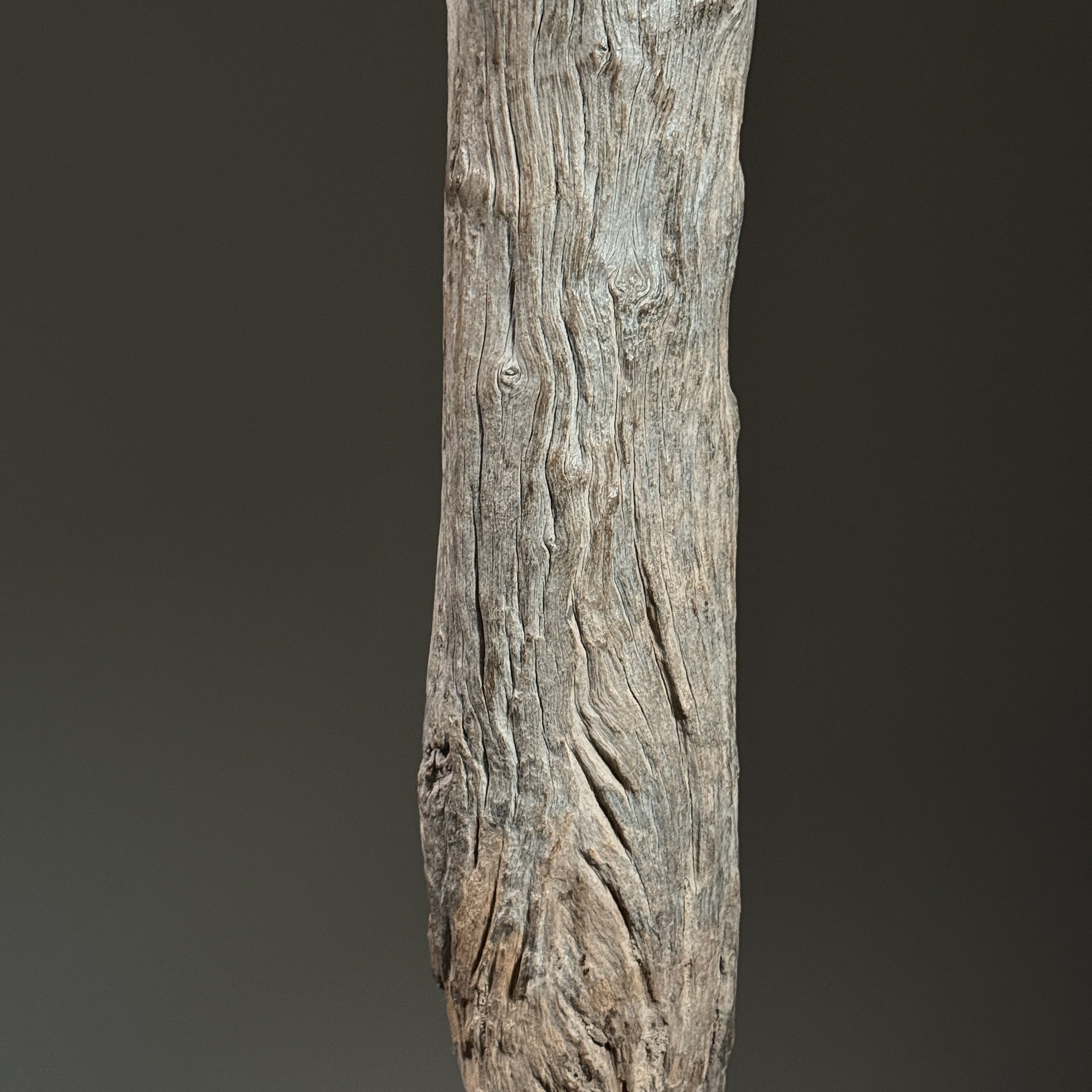 Image 13 of 13
Image 13 of 13














Antique Mossi People Hand Carved Post on Stand
This hand-carved post is a fine example of the artistic tradition of the Mossi people, an ethnic group native to Burkina Faso in West Africa. The Mossi are renowned for their rich cultural heritage, particularly their woodcarving skills, which have been passed down through generations. Carved posts like this one held significant cultural and functional roles within Mossi society. They were often used in architectural contexts, serving as structural supports for buildings or granaries, while also embodying spiritual and symbolic meanings. Additionally, these posts were sometimes used to display ritual dolls or figures, which played a role in fertility ceremonies and ancestral veneration. The intricate carvings often reflect the Mossi's connection to their environment, spirituality, and social hierarchy.
This post features a white-grey patina, showing its age and use. It is mounted on a black custom metal stand for display. The piece shows wear consistent with its age, including minor cracks and surface imperfections, which add to its authenticity.
A unique and functional artifact, this Mossi post offers a connection to the cultural heritage of the Mossi people. Refer to the photos for details on its condition.
Size: 26”H x 5”W x 4”D
Provenance: G.D. Thomas Wheelock Collection, New York, NY
Thomas G.D. Wheelock was a dedicated collector of African art, with a particular focus on the artistic traditions of Burkina Faso. His mission extended beyond mere acquisition; he sought to both celebrate and preserve the rich cultural heritage of the region. Wheelock placed great value on the relationships he cultivated with local artists and communities, often traveling to Africa to engage directly with them. His efforts resulted in a profound connection to the cultural practices and artistic expressions of the region.
Wheelock’s collection, amassed over more than thirty years, grew to include over 1,700 pieces, making it one of the most extensive and significant collections of its kind. Four of these works are now part of the permanent collection at the Metropolitan Museum of Art in New York City, while other pieces have been loaned to prestigious institutions, including the High Museum in Atlanta.
The importance of Wheelock’s collection was further cemented with the publication of the rare and influential book, Land of the Flying Masks: Art and Culture in Burkina Faso; The Thomas G.B. Wheelock Collection. This publication highlights hundreds of exceptional works from the Nuna, Bwa, Bobo, and Mossi peoples, as well as notable pieces from the Lobi, Gurunsi, Winiama, and Lela communities. Through his collection and its documentation, Wheelock has left an enduring legacy that continues to honor and preserve the artistic traditions of Burkina Faso.
This hand-carved post is a fine example of the artistic tradition of the Mossi people, an ethnic group native to Burkina Faso in West Africa. The Mossi are renowned for their rich cultural heritage, particularly their woodcarving skills, which have been passed down through generations. Carved posts like this one held significant cultural and functional roles within Mossi society. They were often used in architectural contexts, serving as structural supports for buildings or granaries, while also embodying spiritual and symbolic meanings. Additionally, these posts were sometimes used to display ritual dolls or figures, which played a role in fertility ceremonies and ancestral veneration. The intricate carvings often reflect the Mossi's connection to their environment, spirituality, and social hierarchy.
This post features a white-grey patina, showing its age and use. It is mounted on a black custom metal stand for display. The piece shows wear consistent with its age, including minor cracks and surface imperfections, which add to its authenticity.
A unique and functional artifact, this Mossi post offers a connection to the cultural heritage of the Mossi people. Refer to the photos for details on its condition.
Size: 26”H x 5”W x 4”D
Provenance: G.D. Thomas Wheelock Collection, New York, NY
Thomas G.D. Wheelock was a dedicated collector of African art, with a particular focus on the artistic traditions of Burkina Faso. His mission extended beyond mere acquisition; he sought to both celebrate and preserve the rich cultural heritage of the region. Wheelock placed great value on the relationships he cultivated with local artists and communities, often traveling to Africa to engage directly with them. His efforts resulted in a profound connection to the cultural practices and artistic expressions of the region.
Wheelock’s collection, amassed over more than thirty years, grew to include over 1,700 pieces, making it one of the most extensive and significant collections of its kind. Four of these works are now part of the permanent collection at the Metropolitan Museum of Art in New York City, while other pieces have been loaned to prestigious institutions, including the High Museum in Atlanta.
The importance of Wheelock’s collection was further cemented with the publication of the rare and influential book, Land of the Flying Masks: Art and Culture in Burkina Faso; The Thomas G.B. Wheelock Collection. This publication highlights hundreds of exceptional works from the Nuna, Bwa, Bobo, and Mossi peoples, as well as notable pieces from the Lobi, Gurunsi, Winiama, and Lela communities. Through his collection and its documentation, Wheelock has left an enduring legacy that continues to honor and preserve the artistic traditions of Burkina Faso.
This hand-carved post is a fine example of the artistic tradition of the Mossi people, an ethnic group native to Burkina Faso in West Africa. The Mossi are renowned for their rich cultural heritage, particularly their woodcarving skills, which have been passed down through generations. Carved posts like this one held significant cultural and functional roles within Mossi society. They were often used in architectural contexts, serving as structural supports for buildings or granaries, while also embodying spiritual and symbolic meanings. Additionally, these posts were sometimes used to display ritual dolls or figures, which played a role in fertility ceremonies and ancestral veneration. The intricate carvings often reflect the Mossi's connection to their environment, spirituality, and social hierarchy.
This post features a white-grey patina, showing its age and use. It is mounted on a black custom metal stand for display. The piece shows wear consistent with its age, including minor cracks and surface imperfections, which add to its authenticity.
A unique and functional artifact, this Mossi post offers a connection to the cultural heritage of the Mossi people. Refer to the photos for details on its condition.
Size: 26”H x 5”W x 4”D
Provenance: G.D. Thomas Wheelock Collection, New York, NY
Thomas G.D. Wheelock was a dedicated collector of African art, with a particular focus on the artistic traditions of Burkina Faso. His mission extended beyond mere acquisition; he sought to both celebrate and preserve the rich cultural heritage of the region. Wheelock placed great value on the relationships he cultivated with local artists and communities, often traveling to Africa to engage directly with them. His efforts resulted in a profound connection to the cultural practices and artistic expressions of the region.
Wheelock’s collection, amassed over more than thirty years, grew to include over 1,700 pieces, making it one of the most extensive and significant collections of its kind. Four of these works are now part of the permanent collection at the Metropolitan Museum of Art in New York City, while other pieces have been loaned to prestigious institutions, including the High Museum in Atlanta.
The importance of Wheelock’s collection was further cemented with the publication of the rare and influential book, Land of the Flying Masks: Art and Culture in Burkina Faso; The Thomas G.B. Wheelock Collection. This publication highlights hundreds of exceptional works from the Nuna, Bwa, Bobo, and Mossi peoples, as well as notable pieces from the Lobi, Gurunsi, Winiama, and Lela communities. Through his collection and its documentation, Wheelock has left an enduring legacy that continues to honor and preserve the artistic traditions of Burkina Faso.

